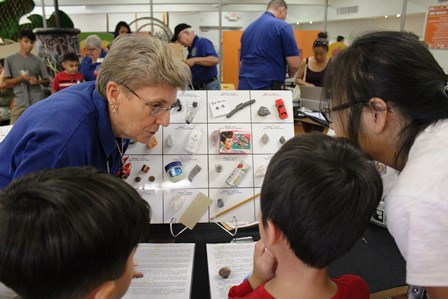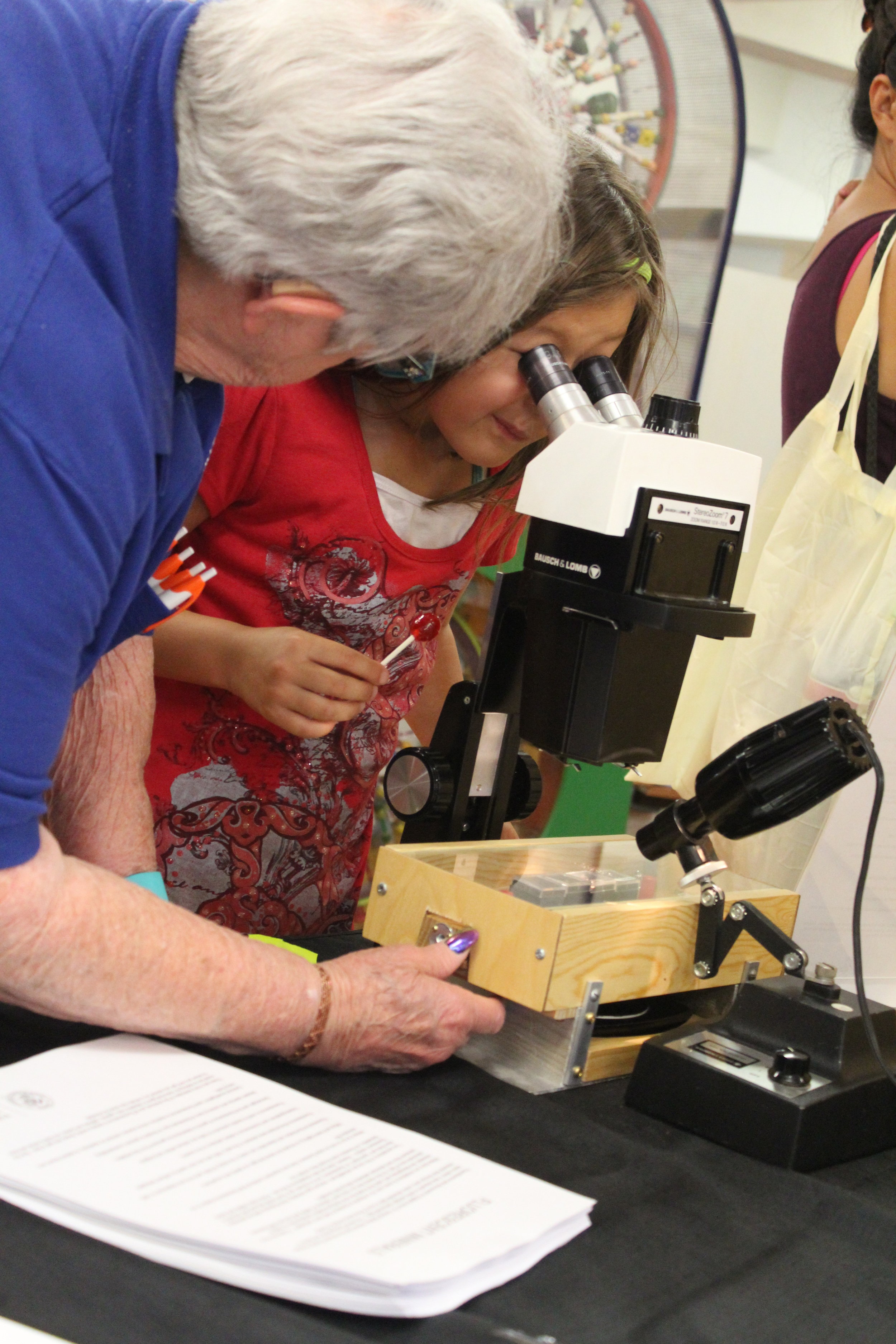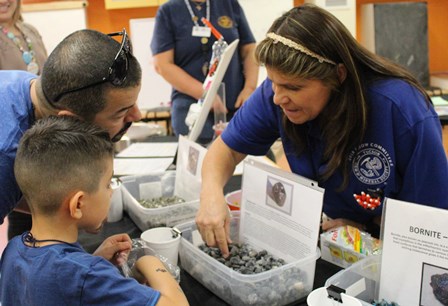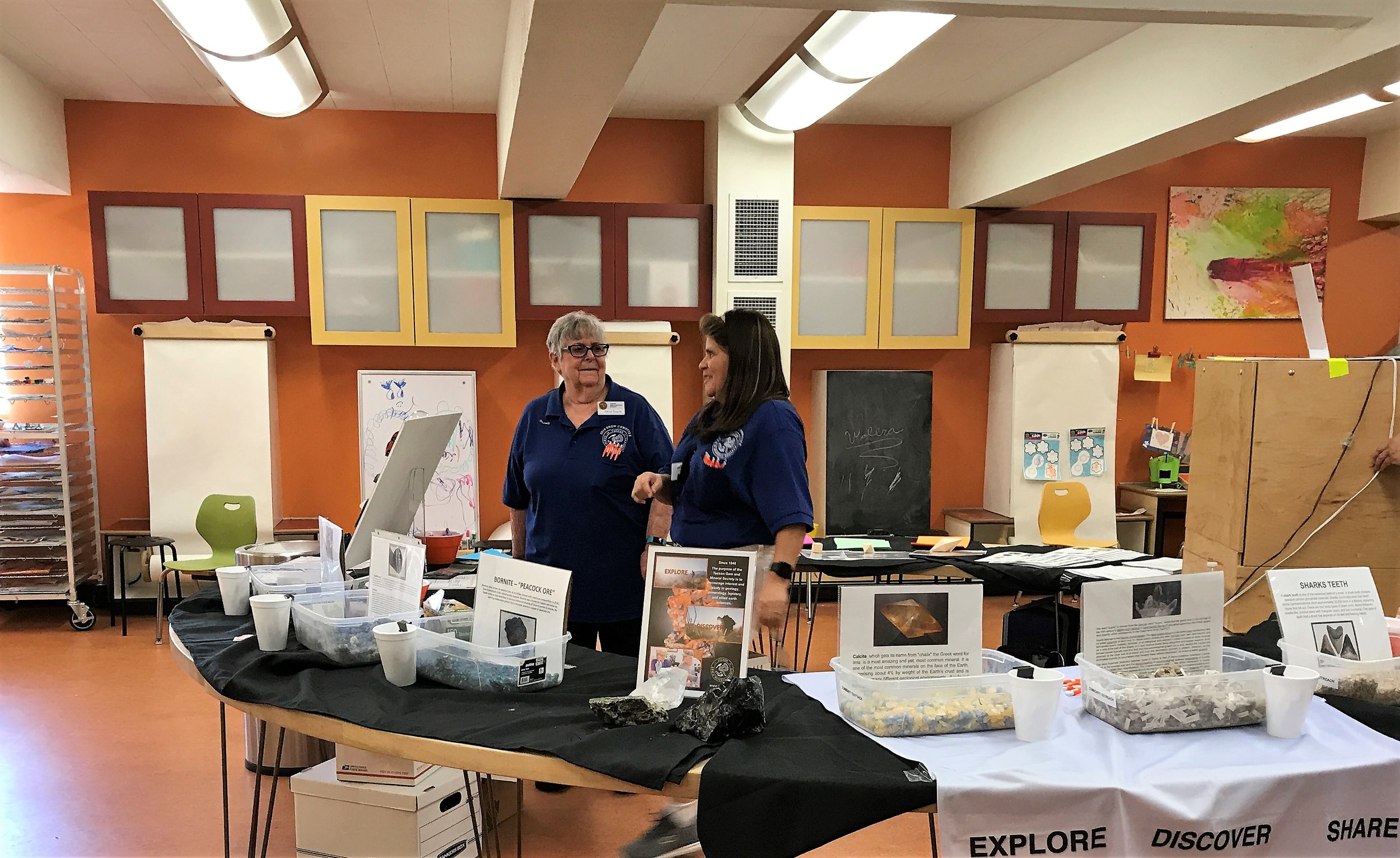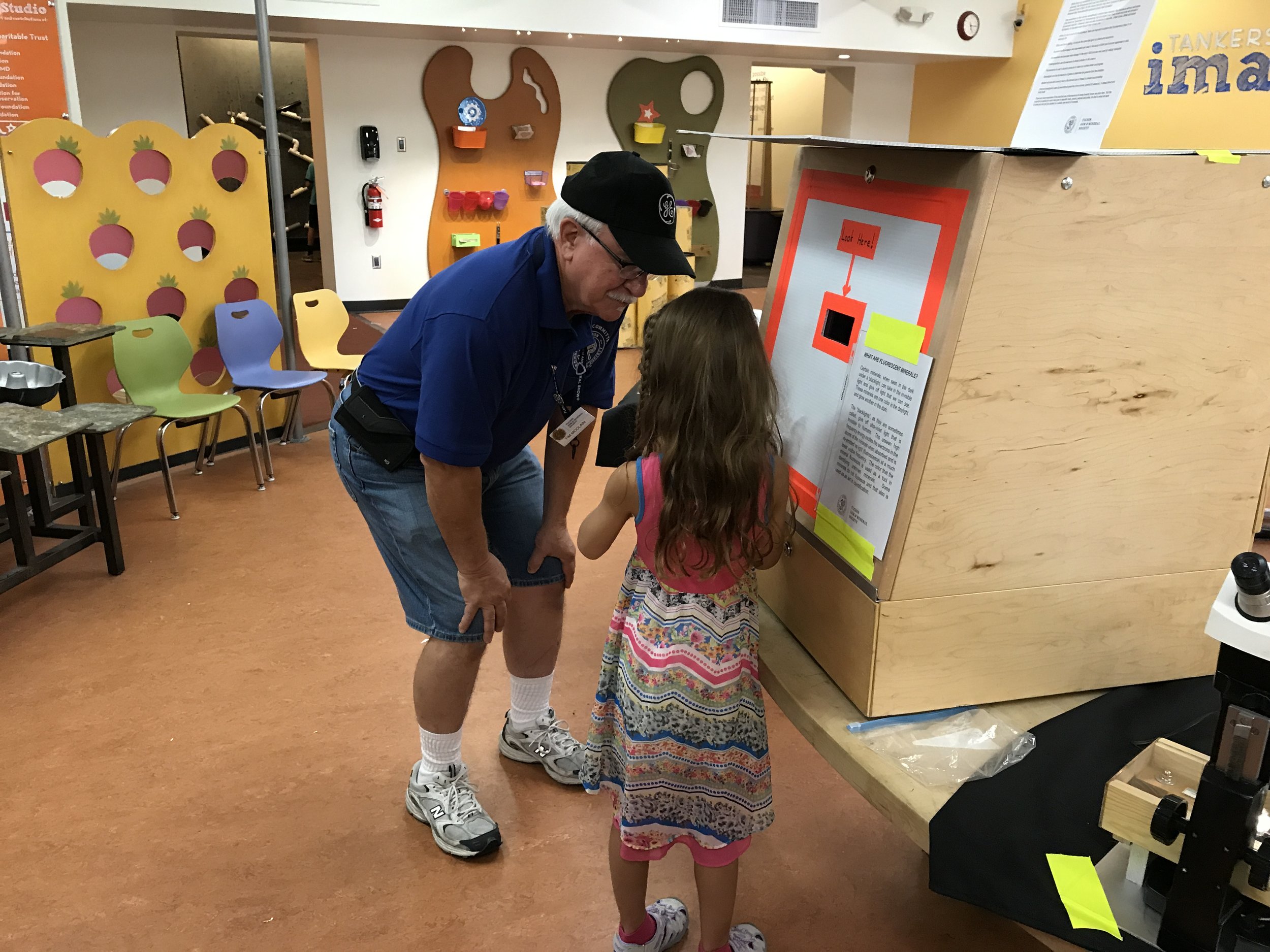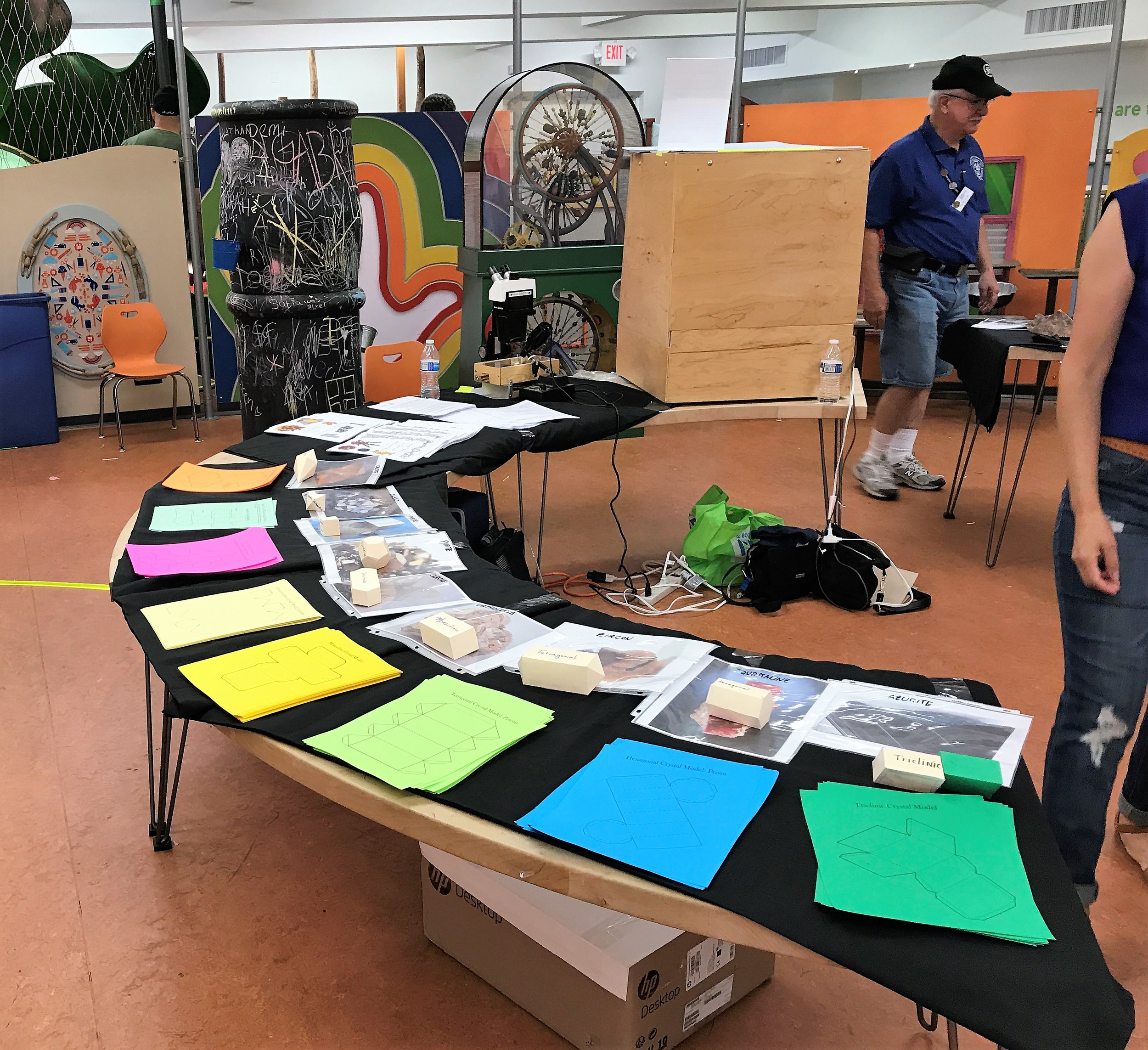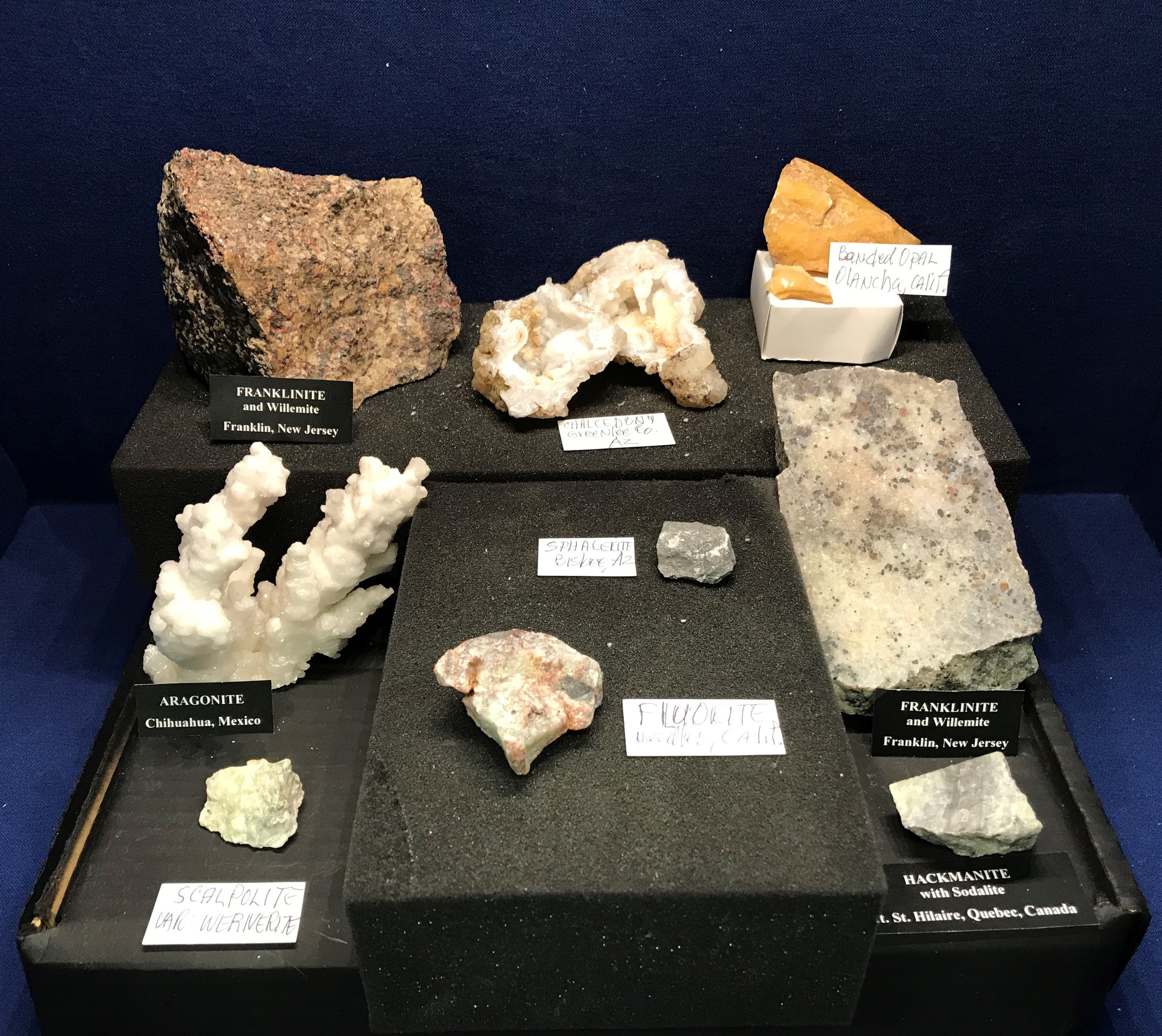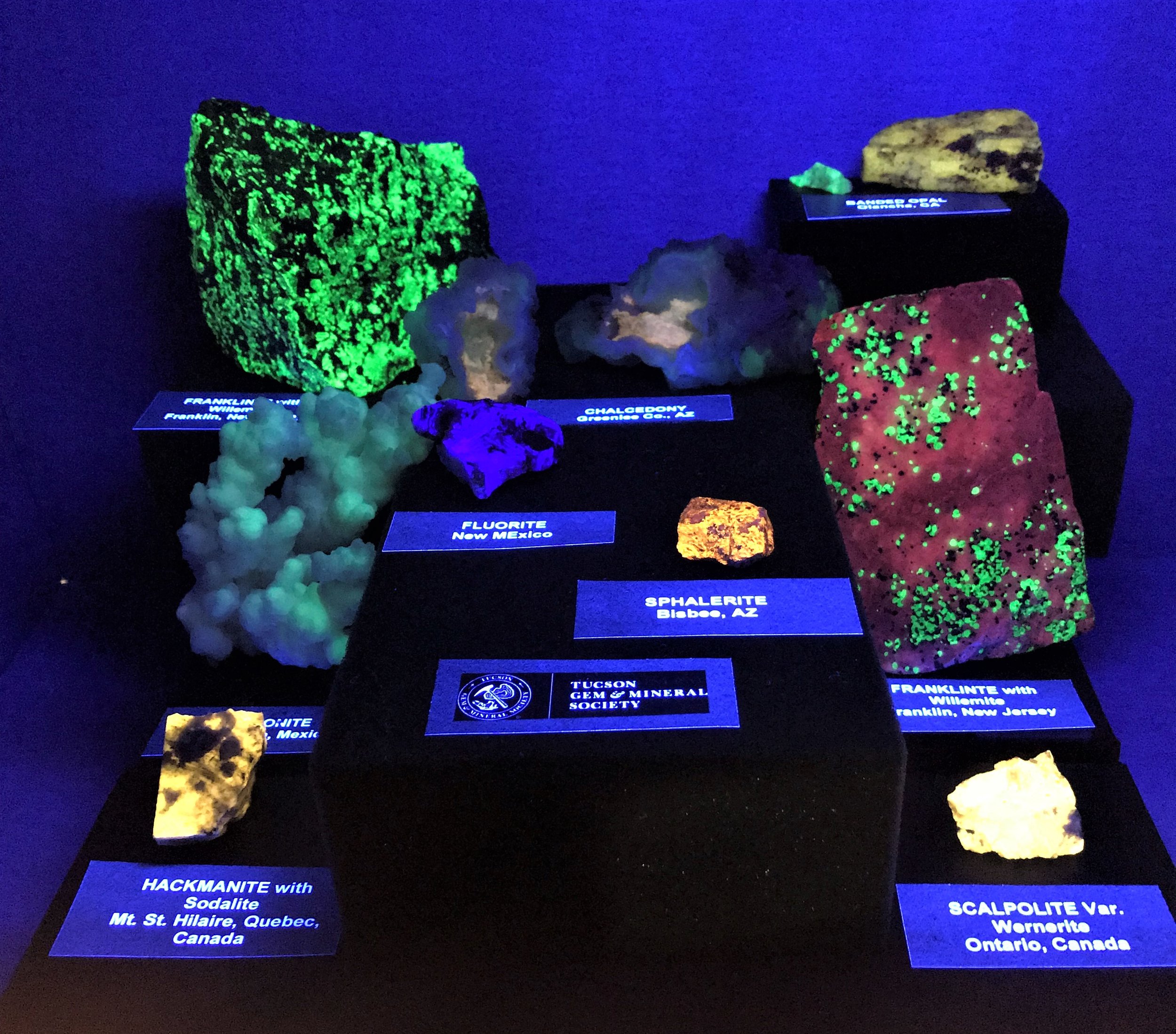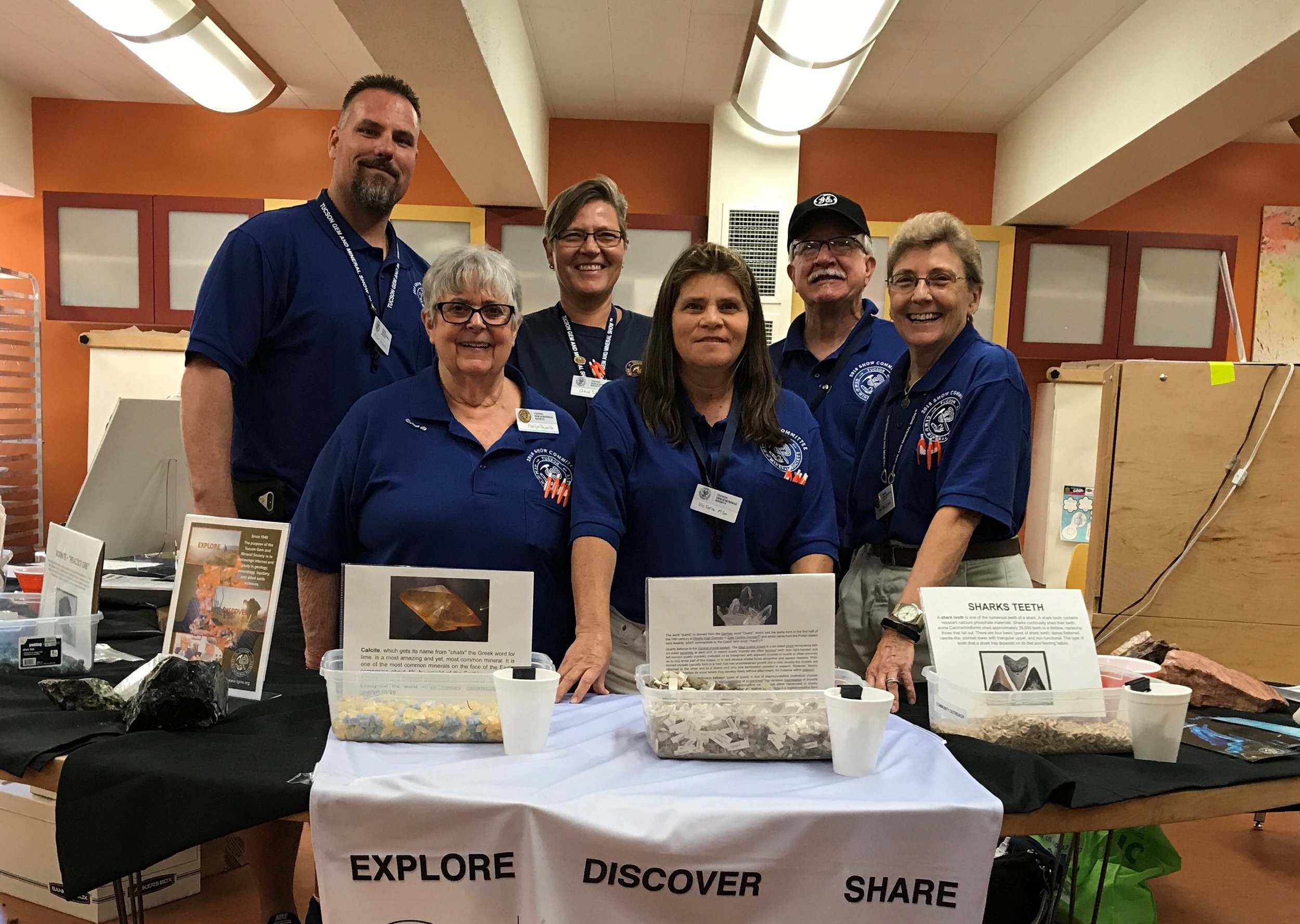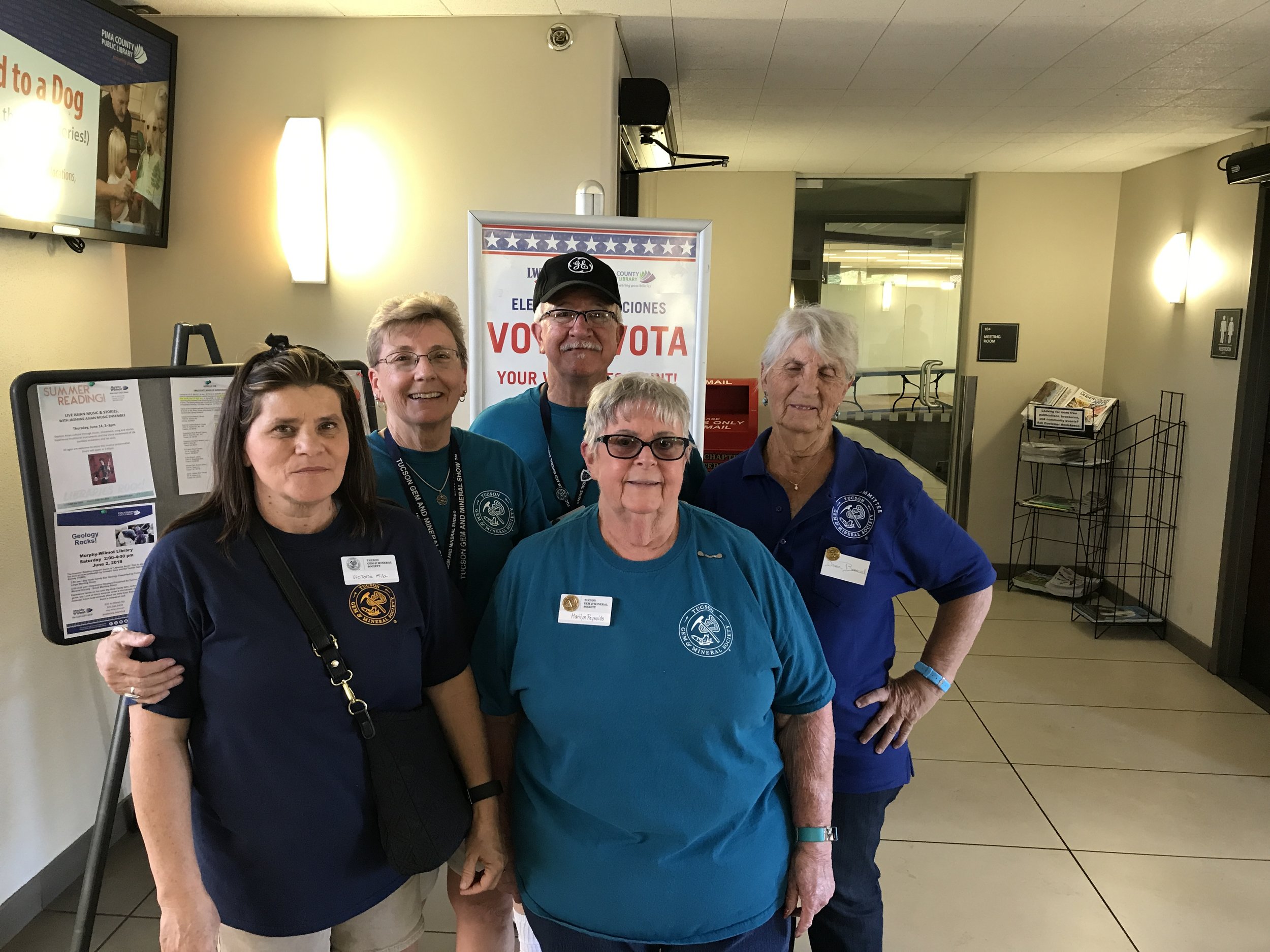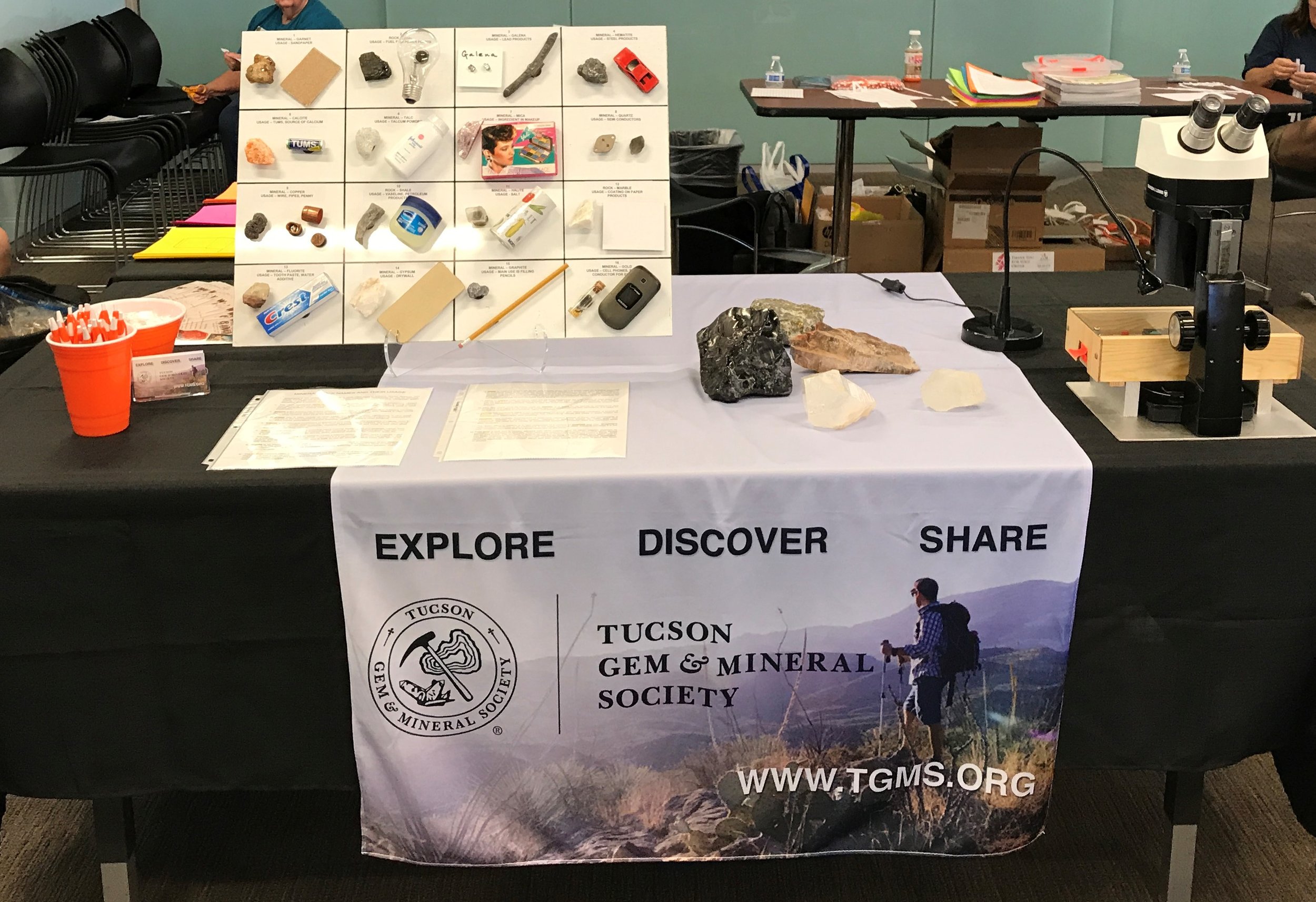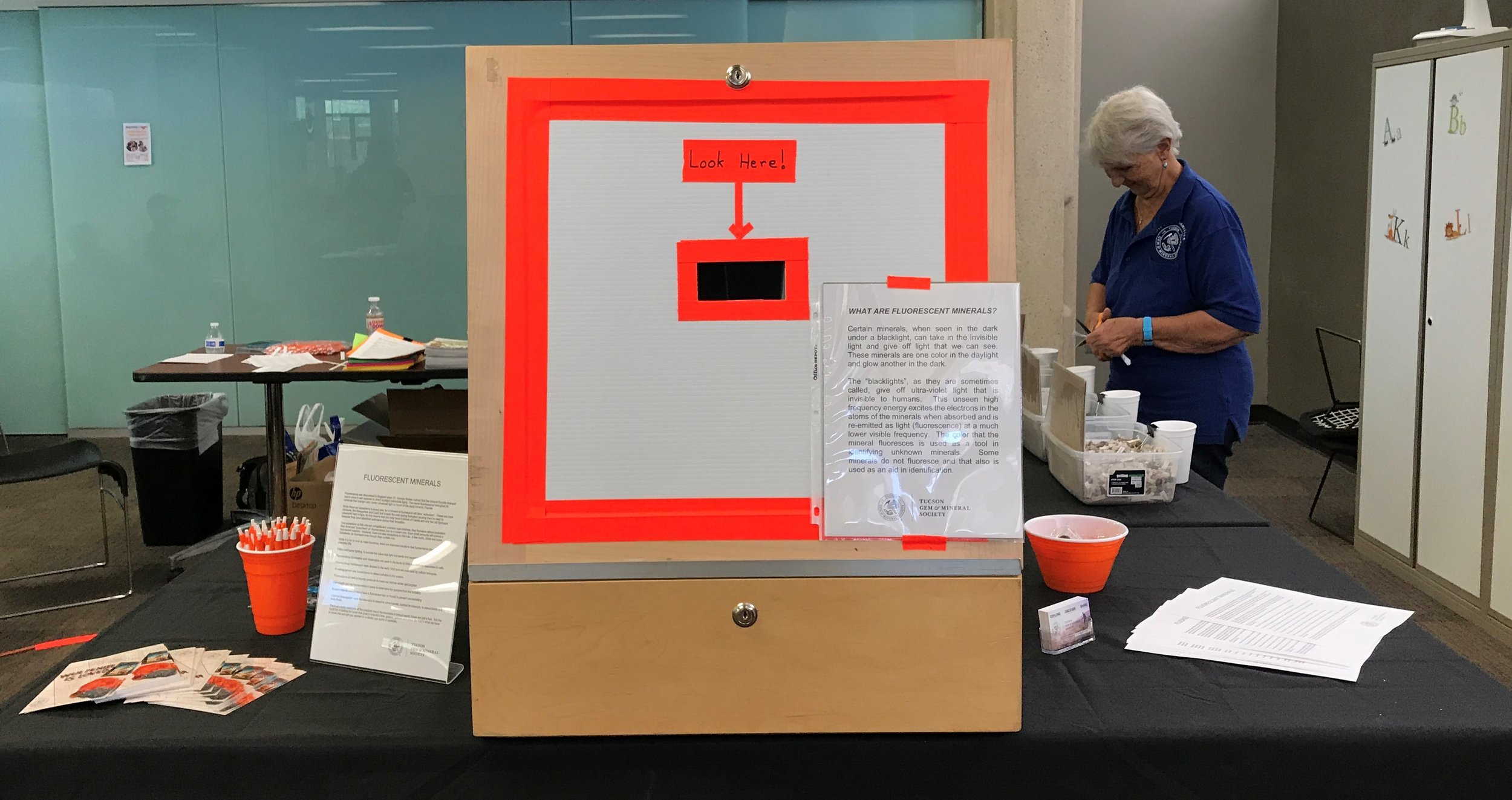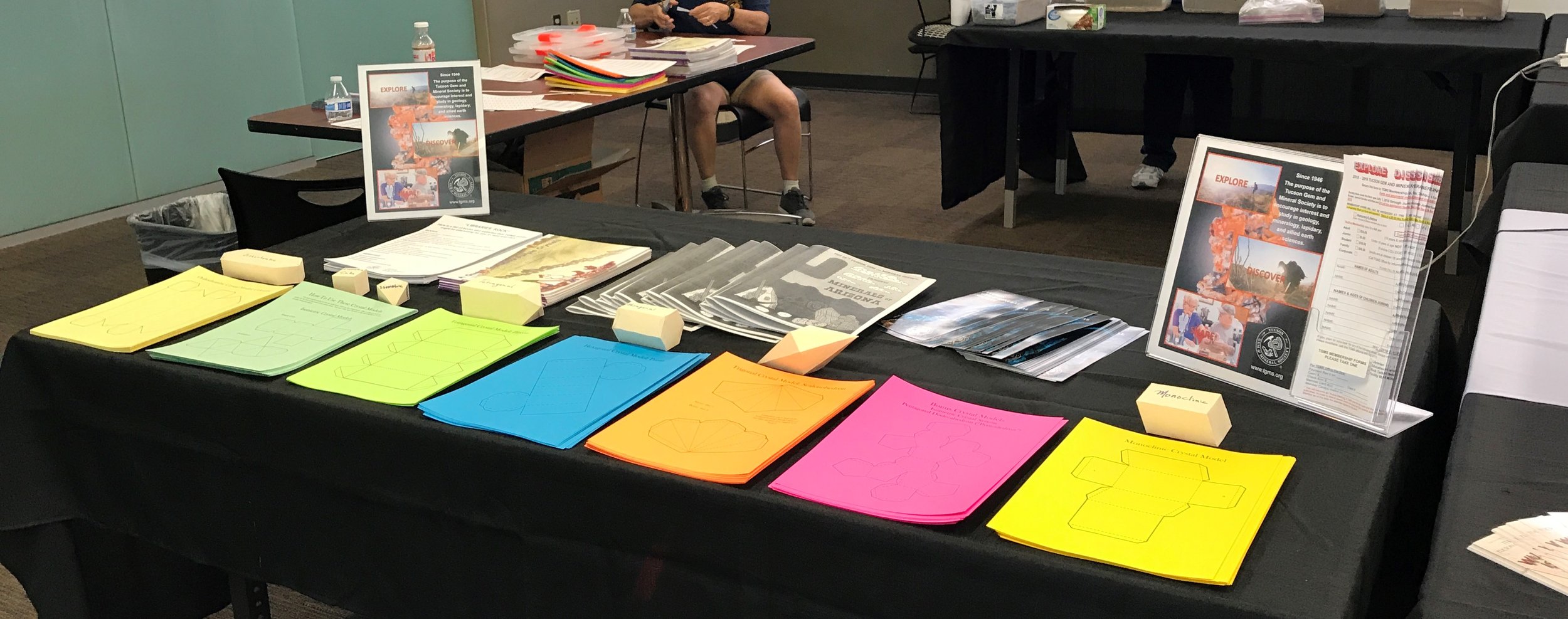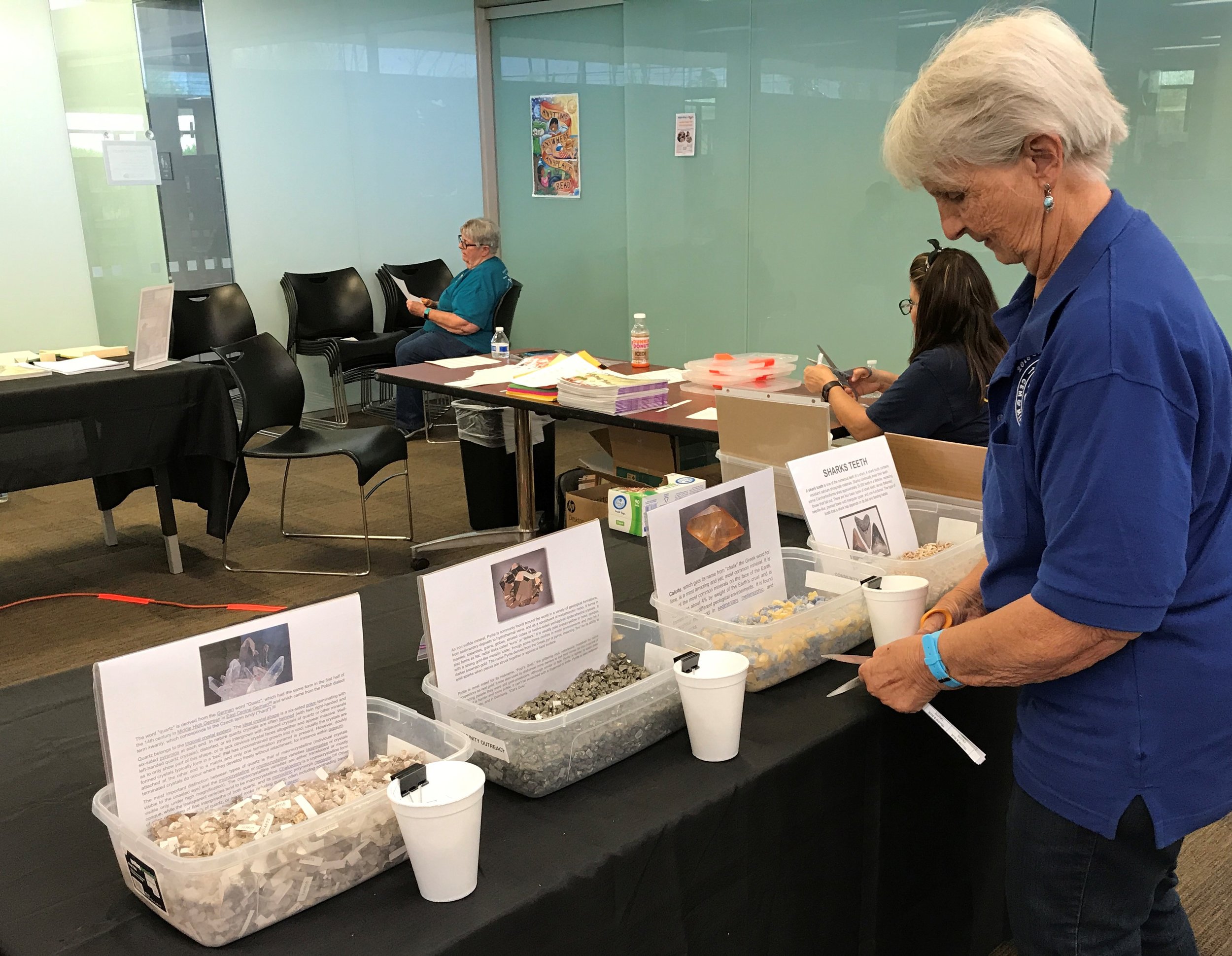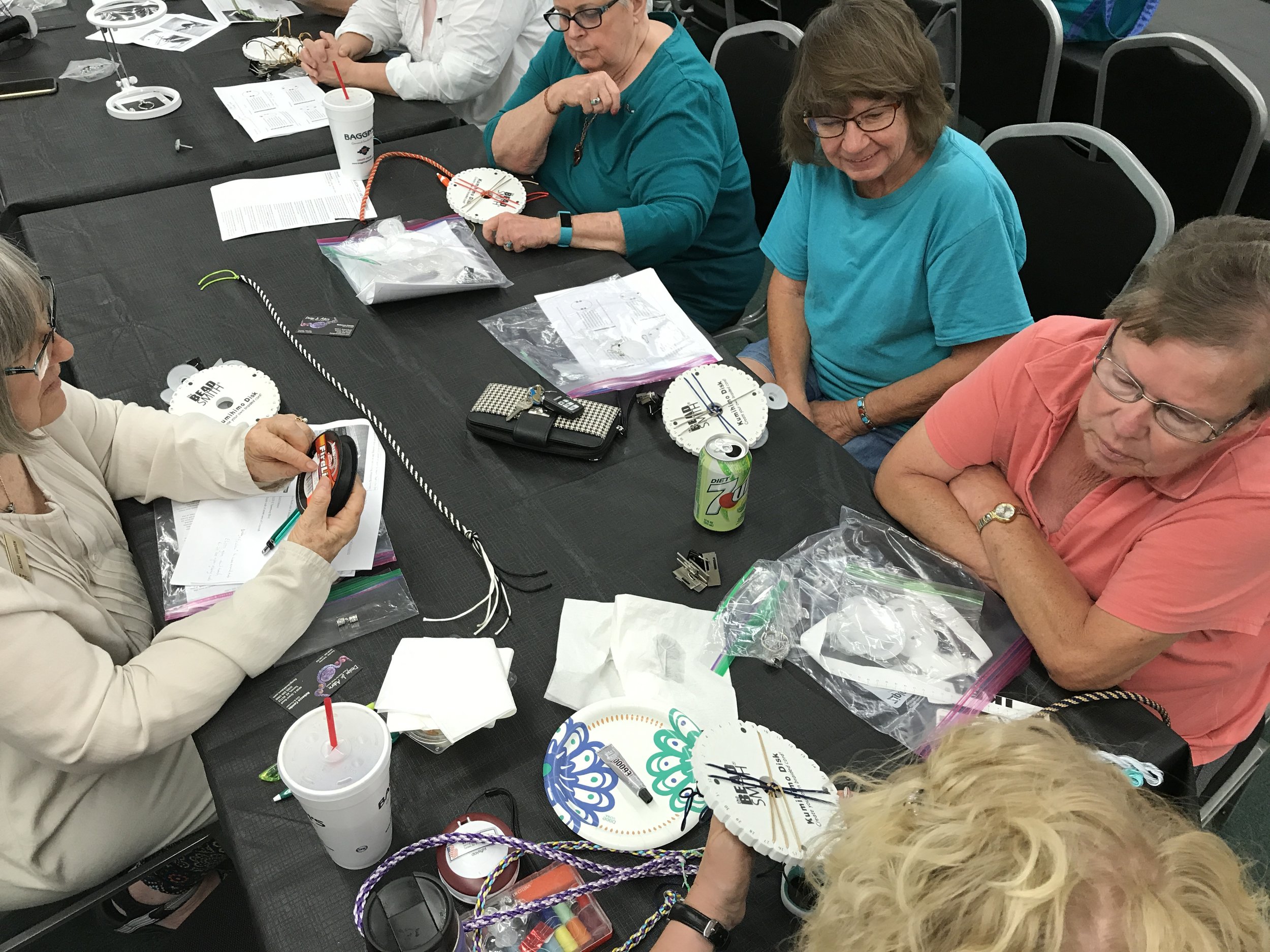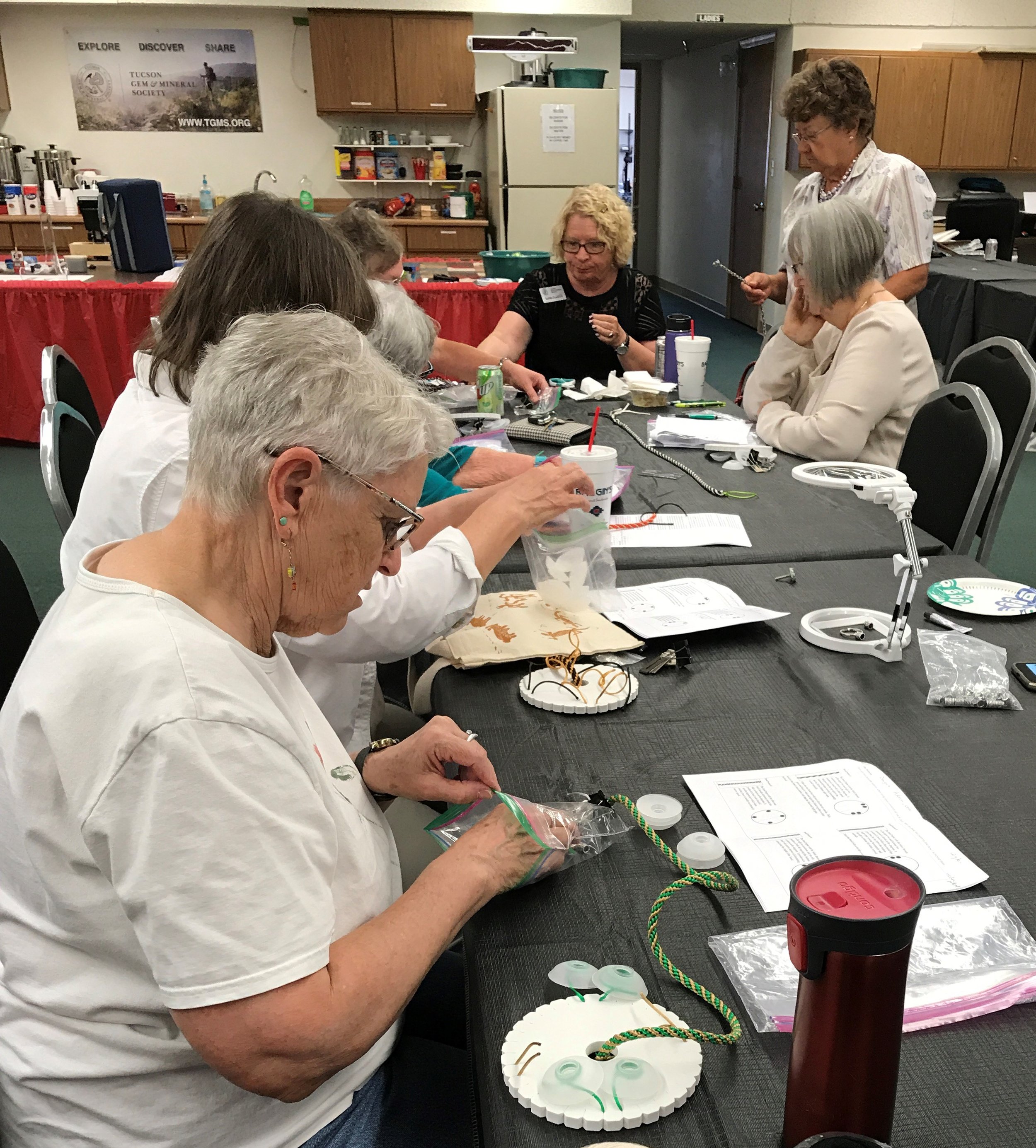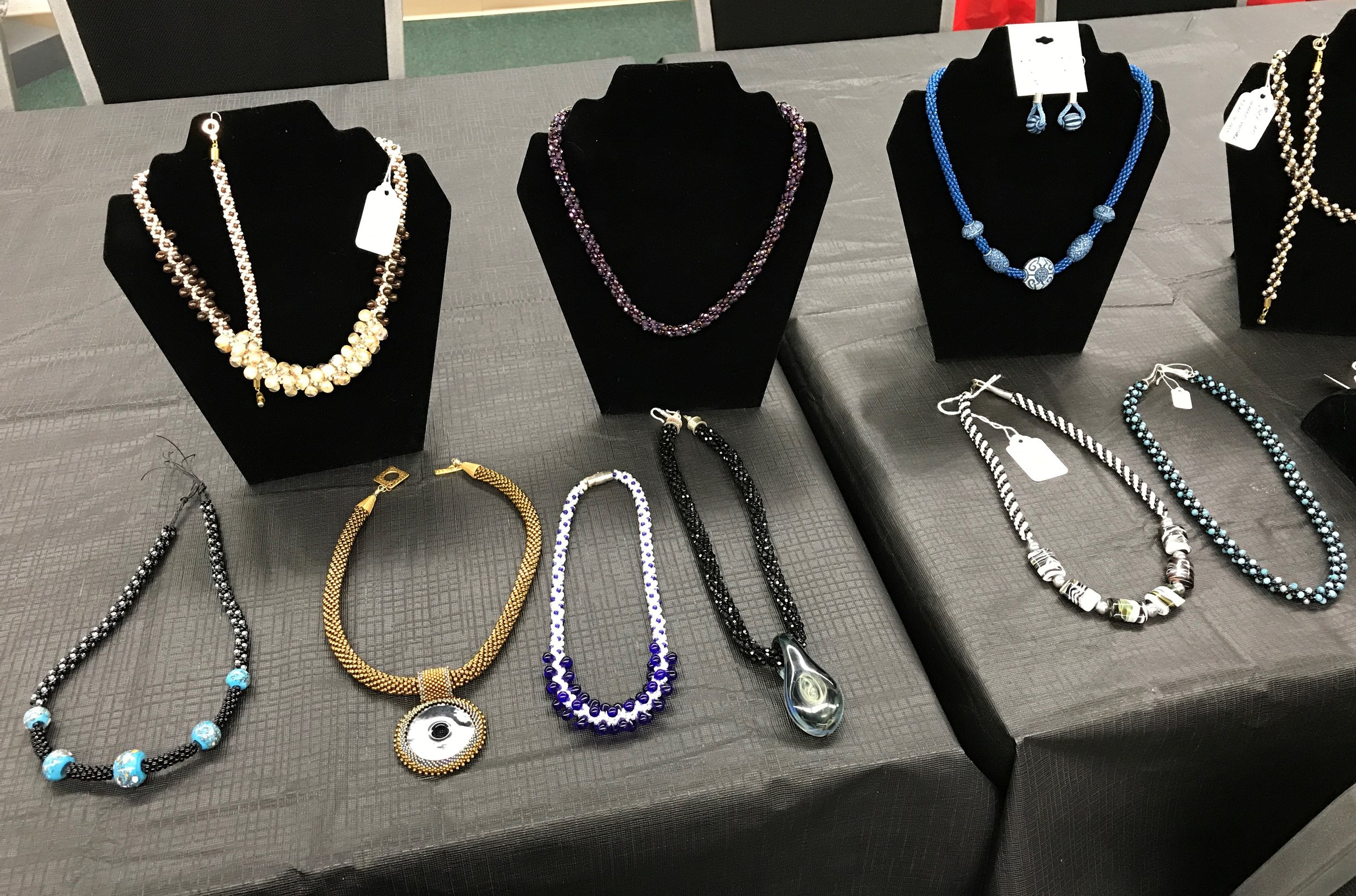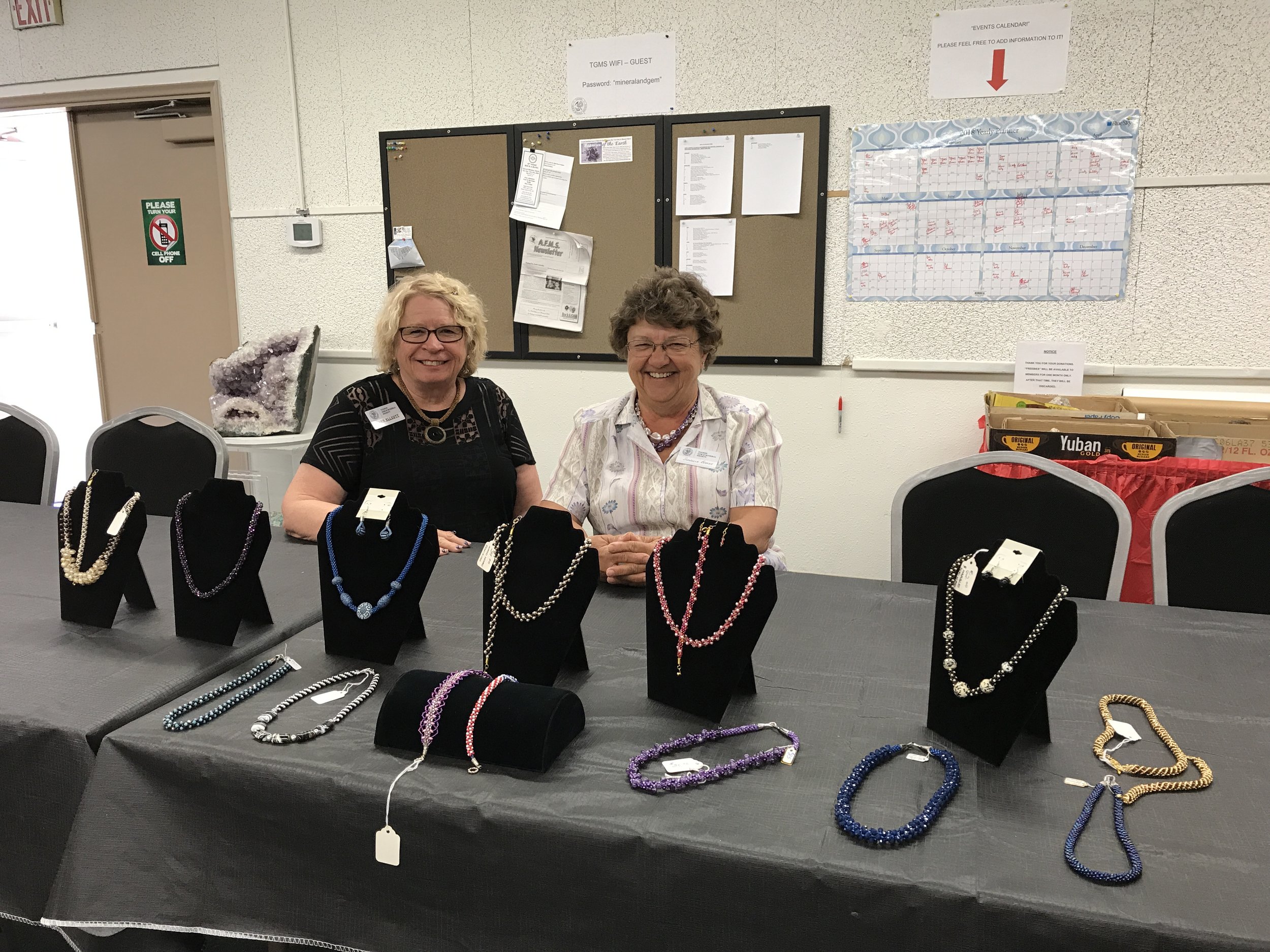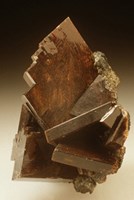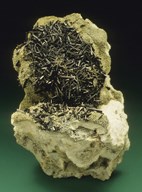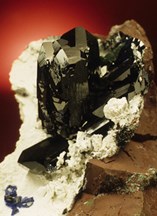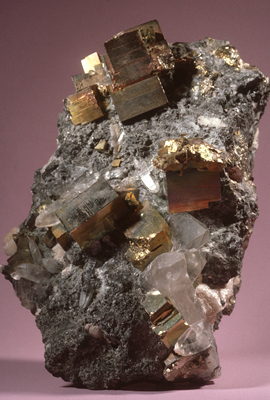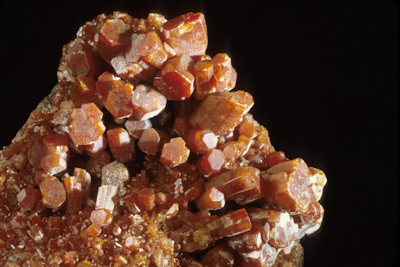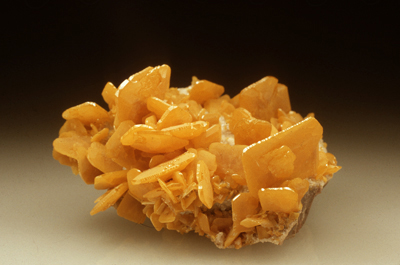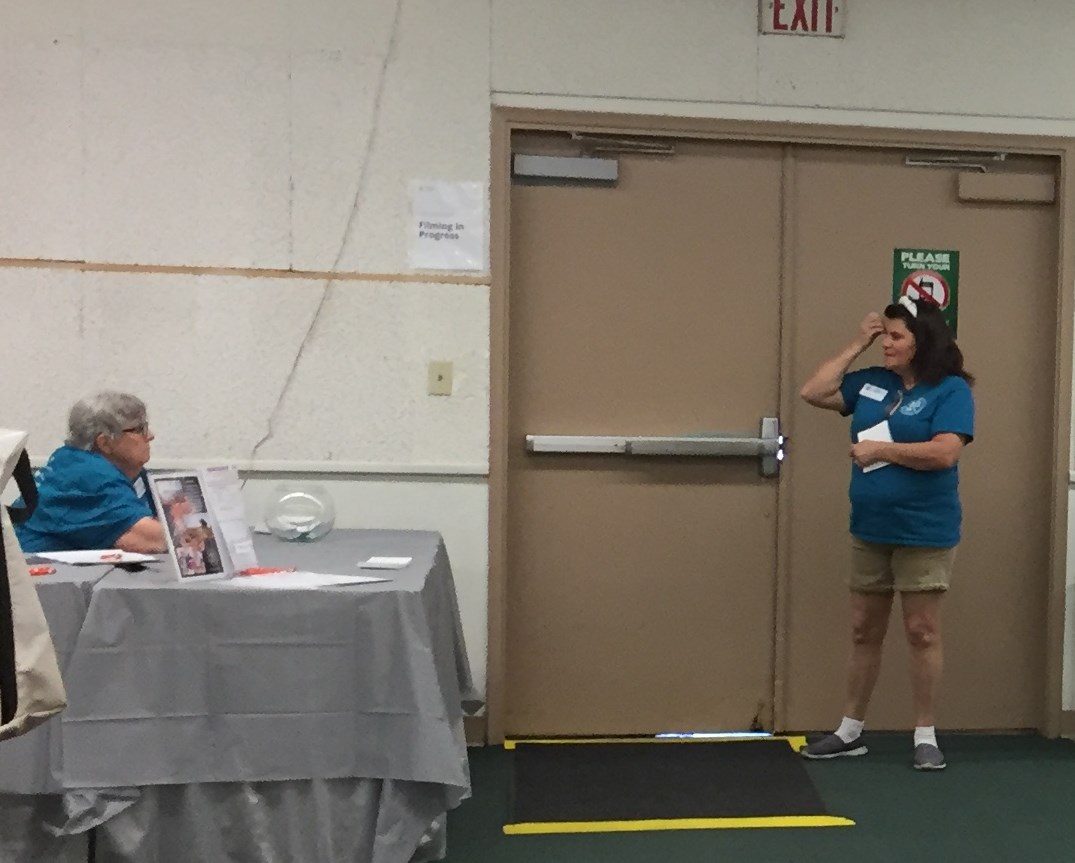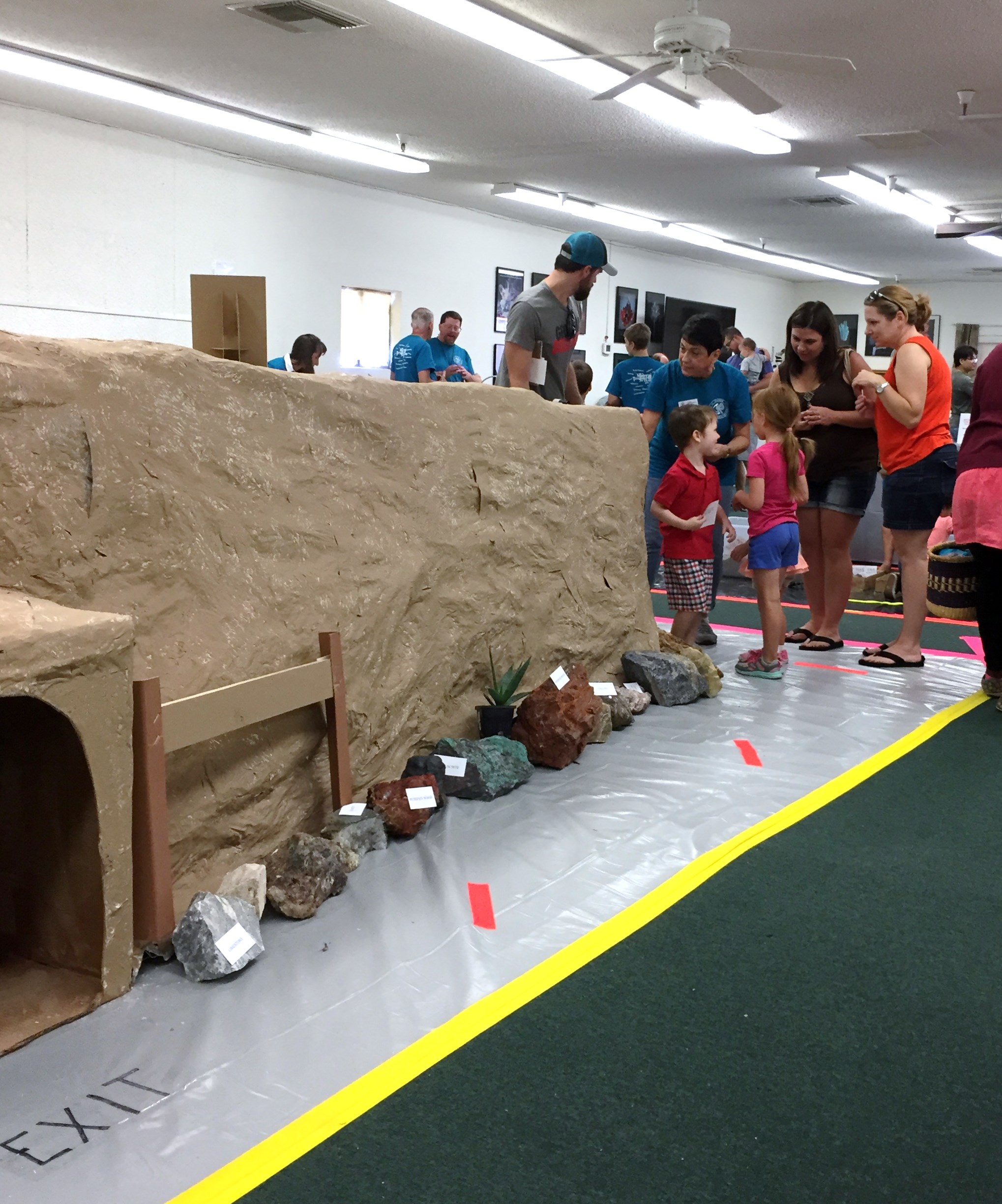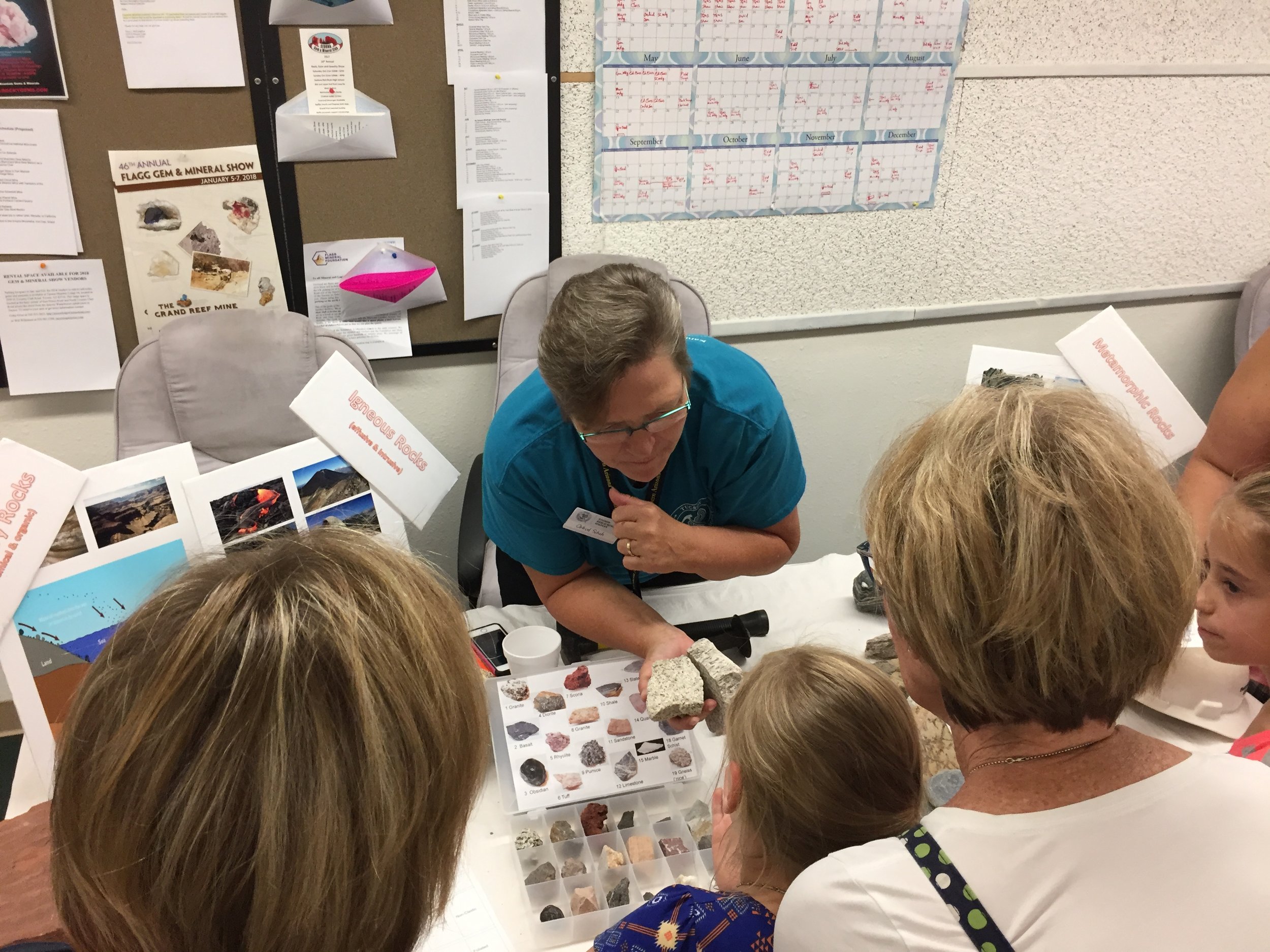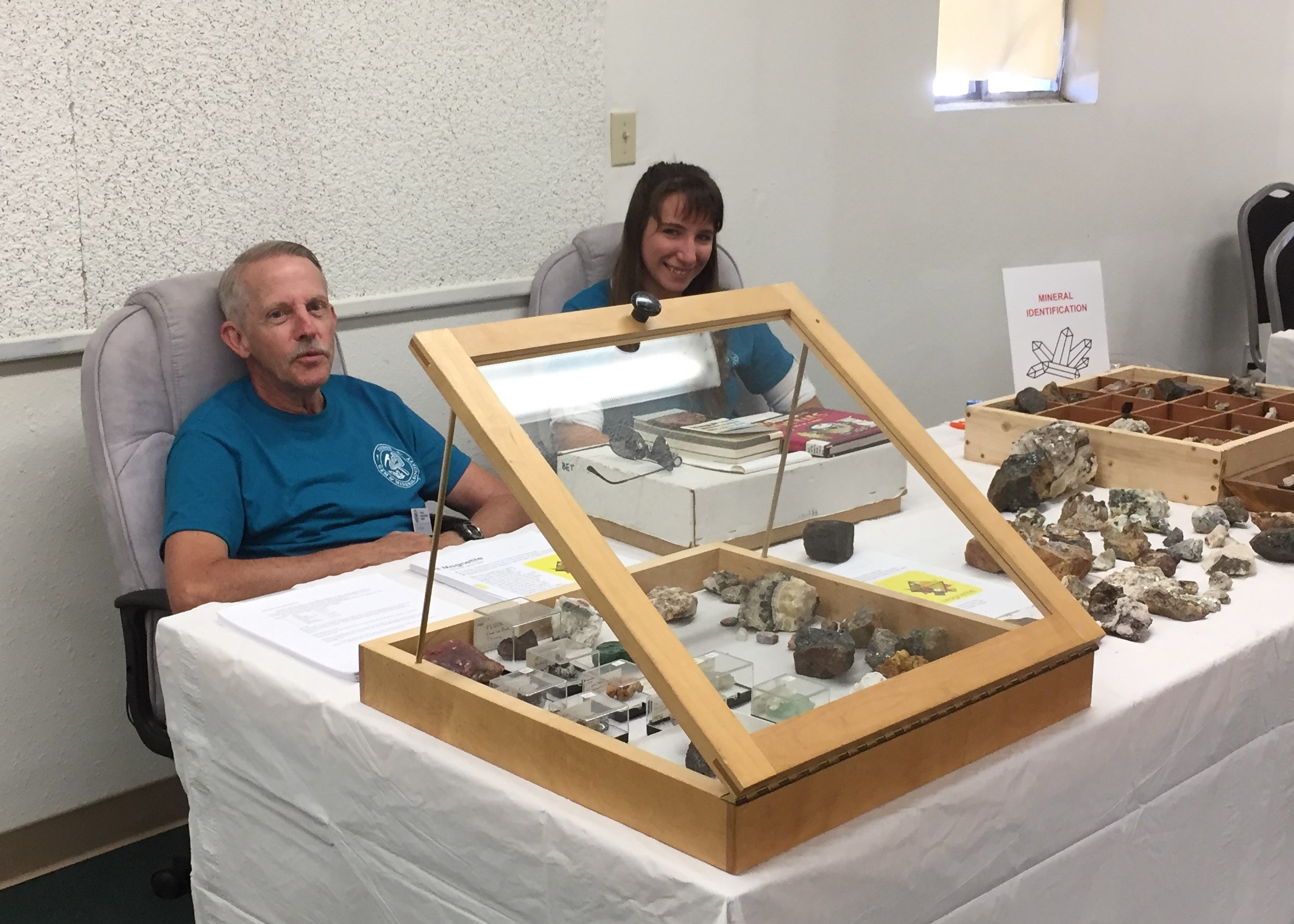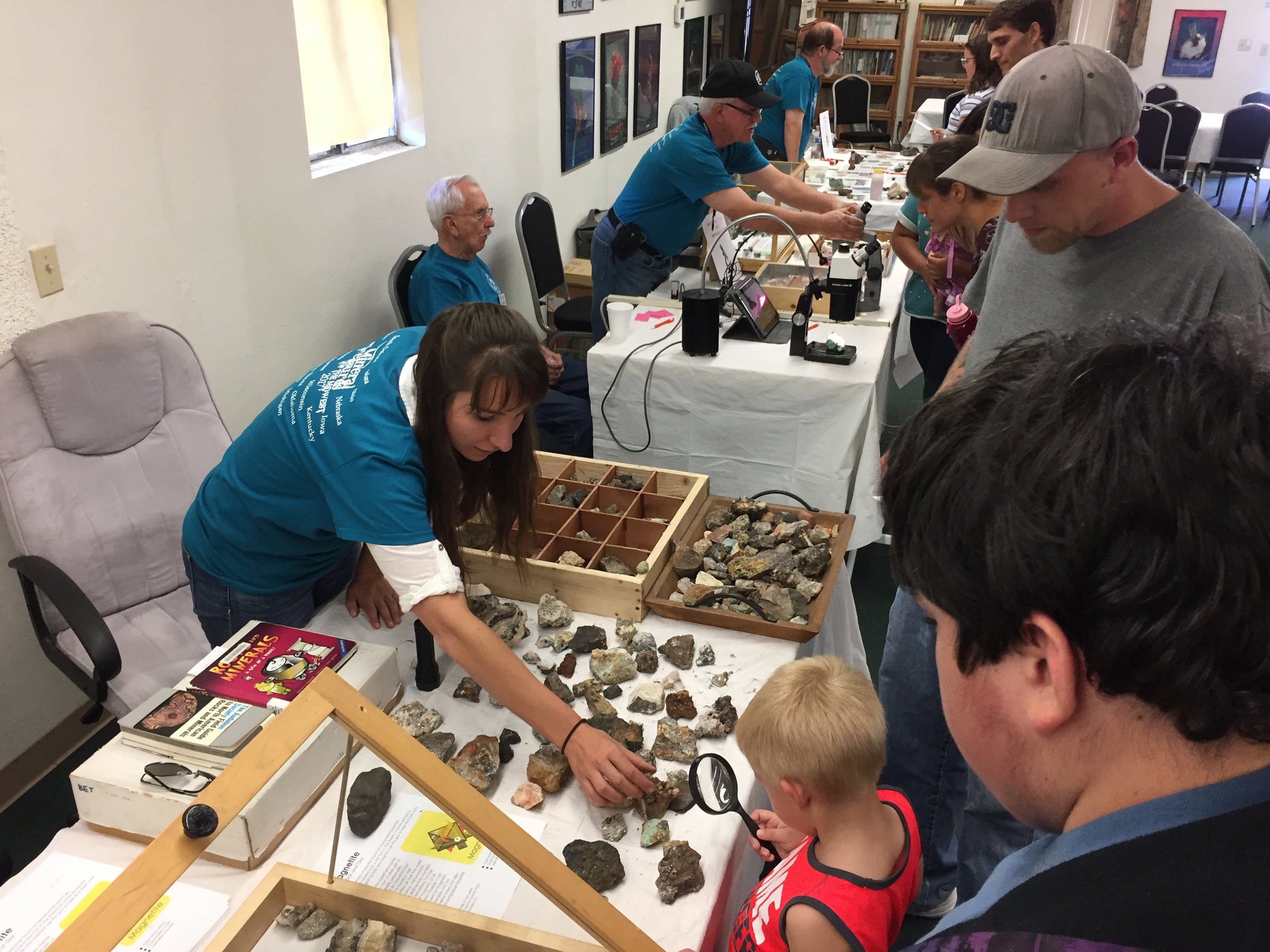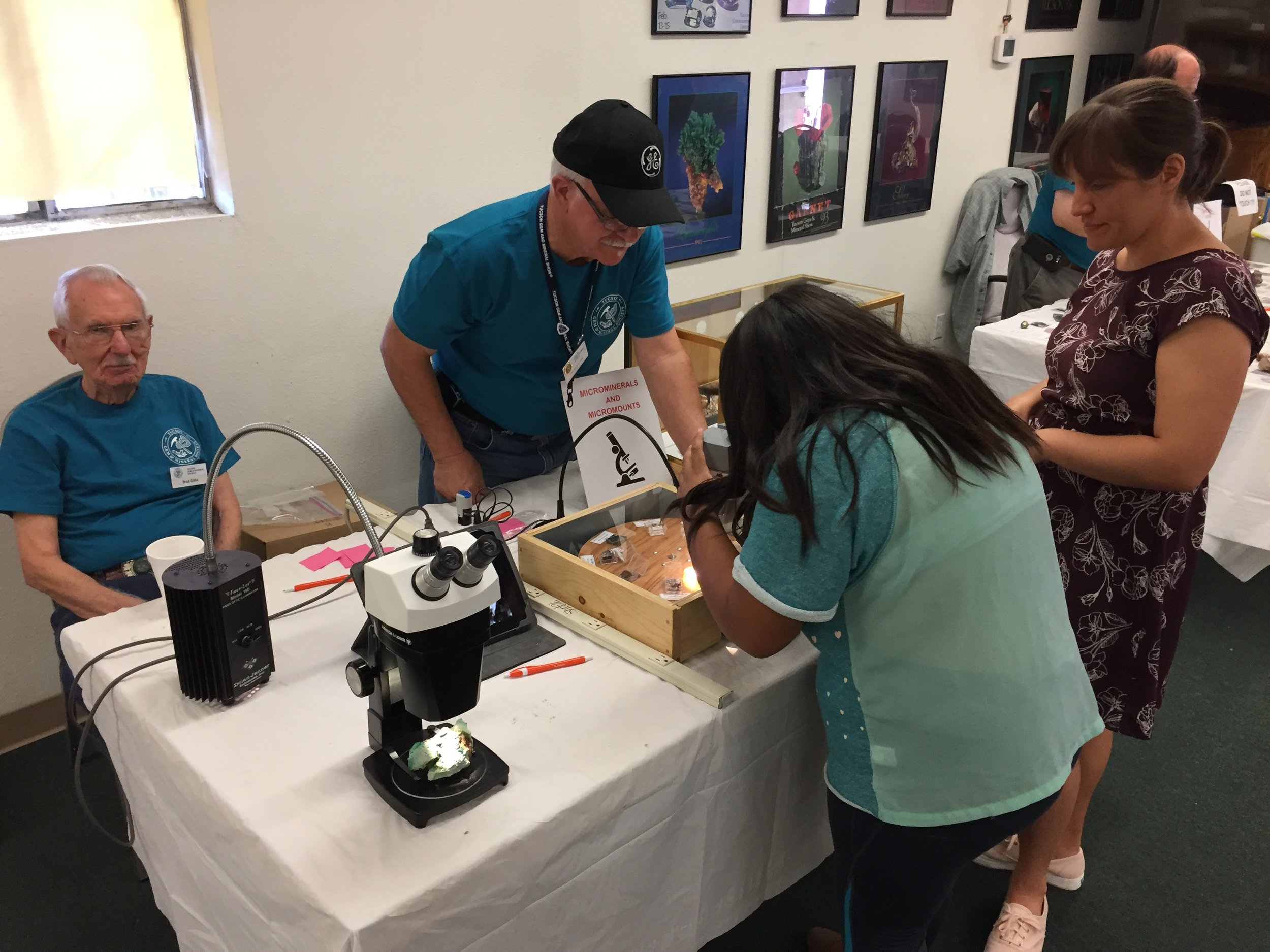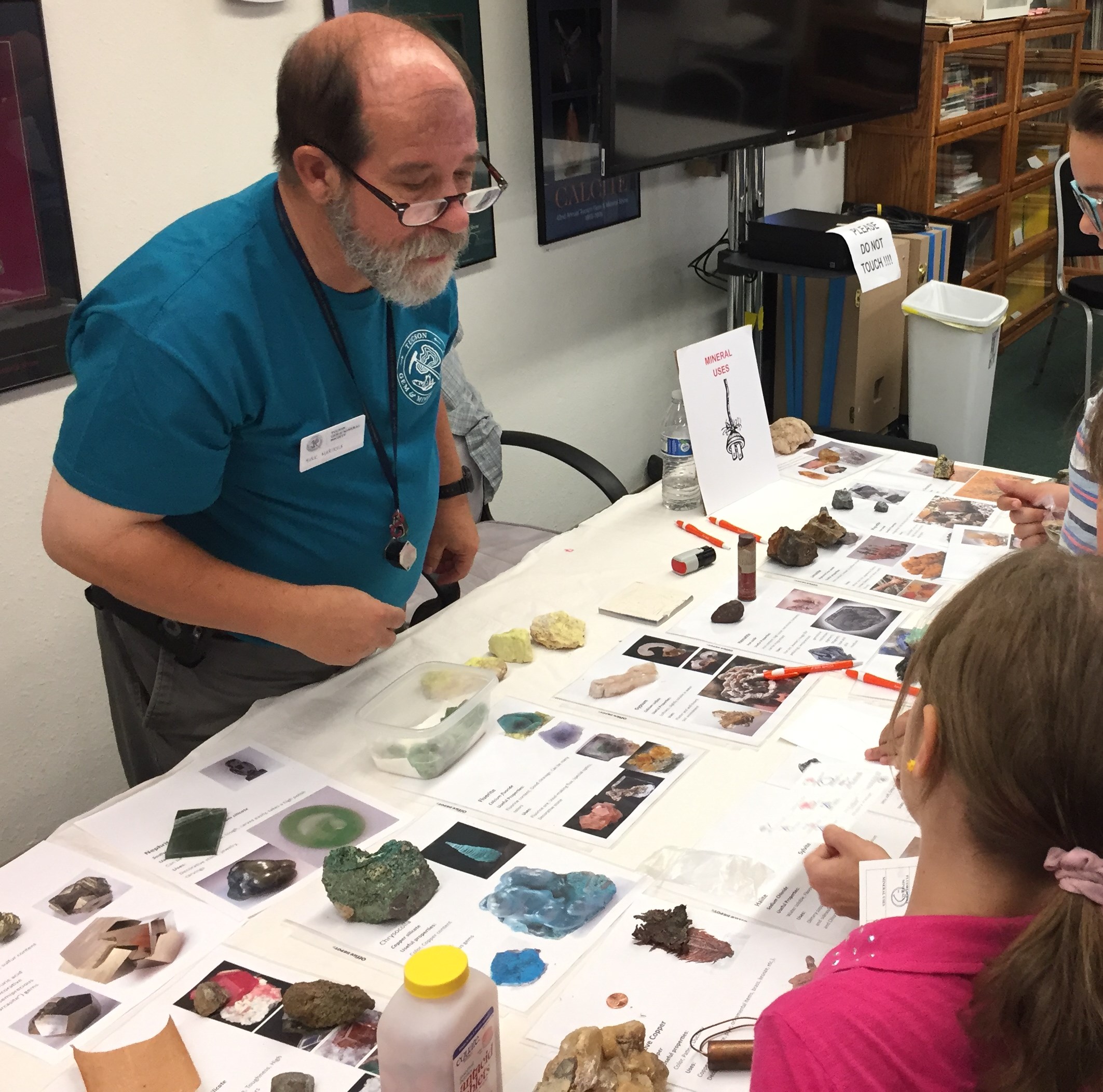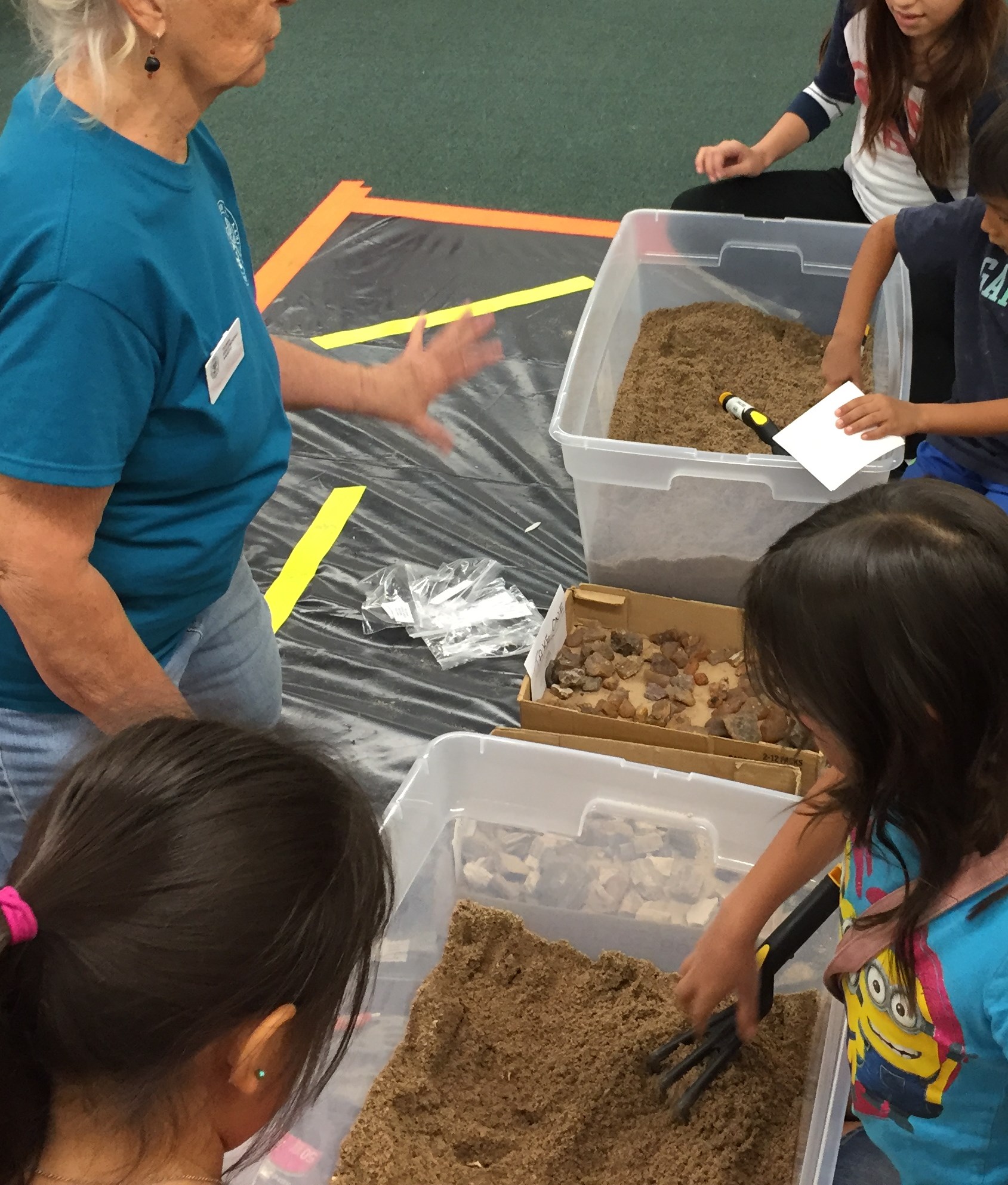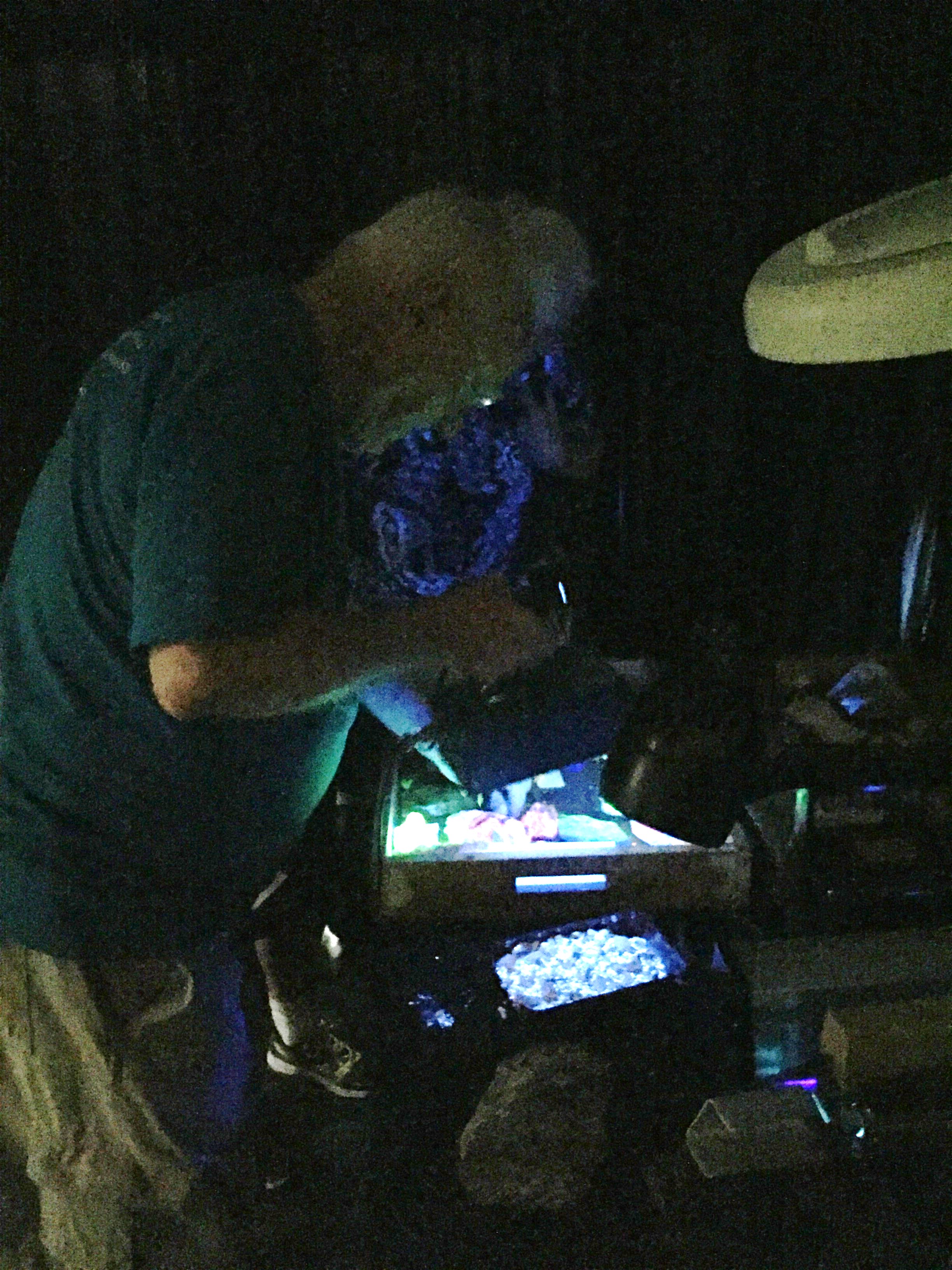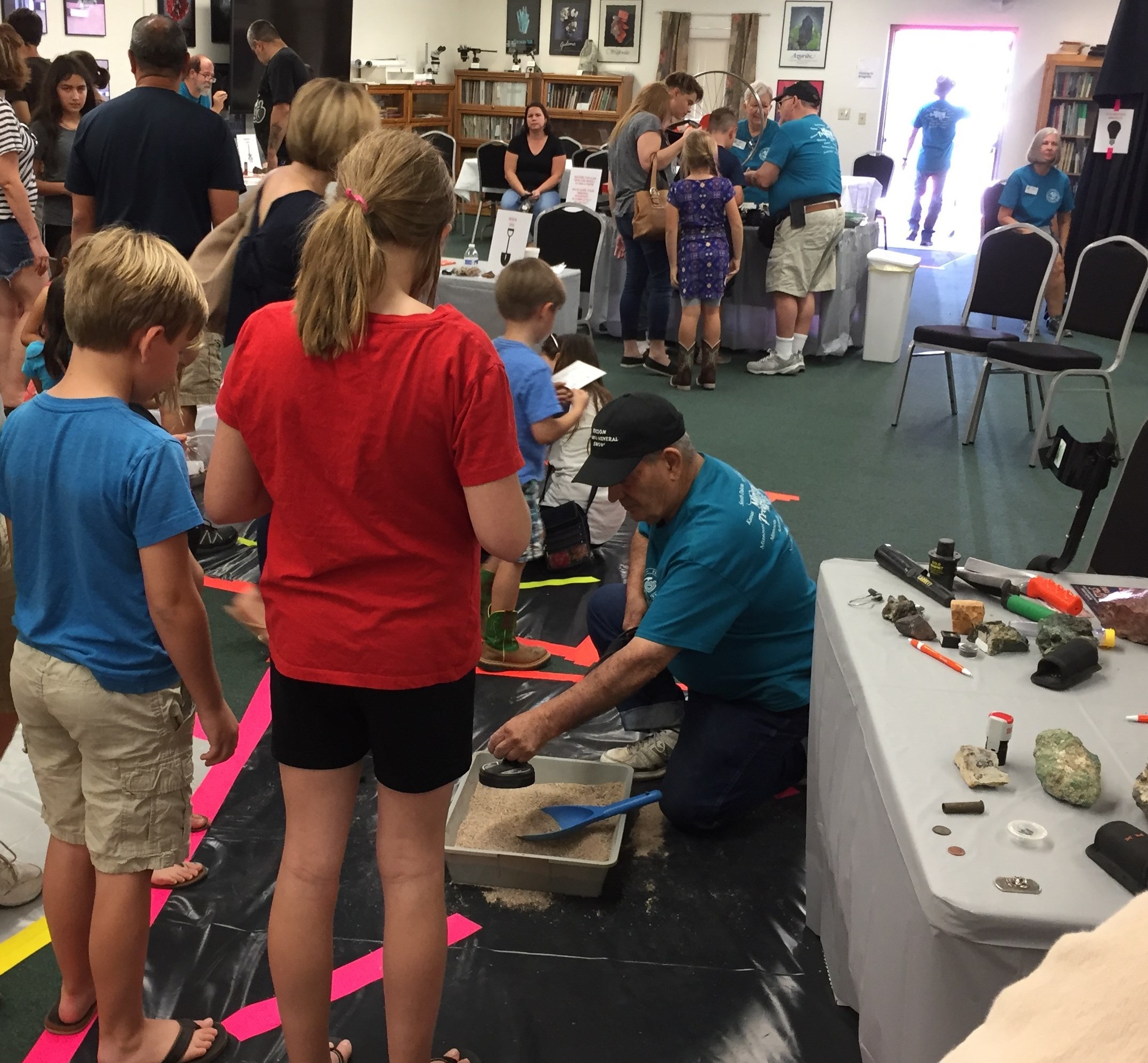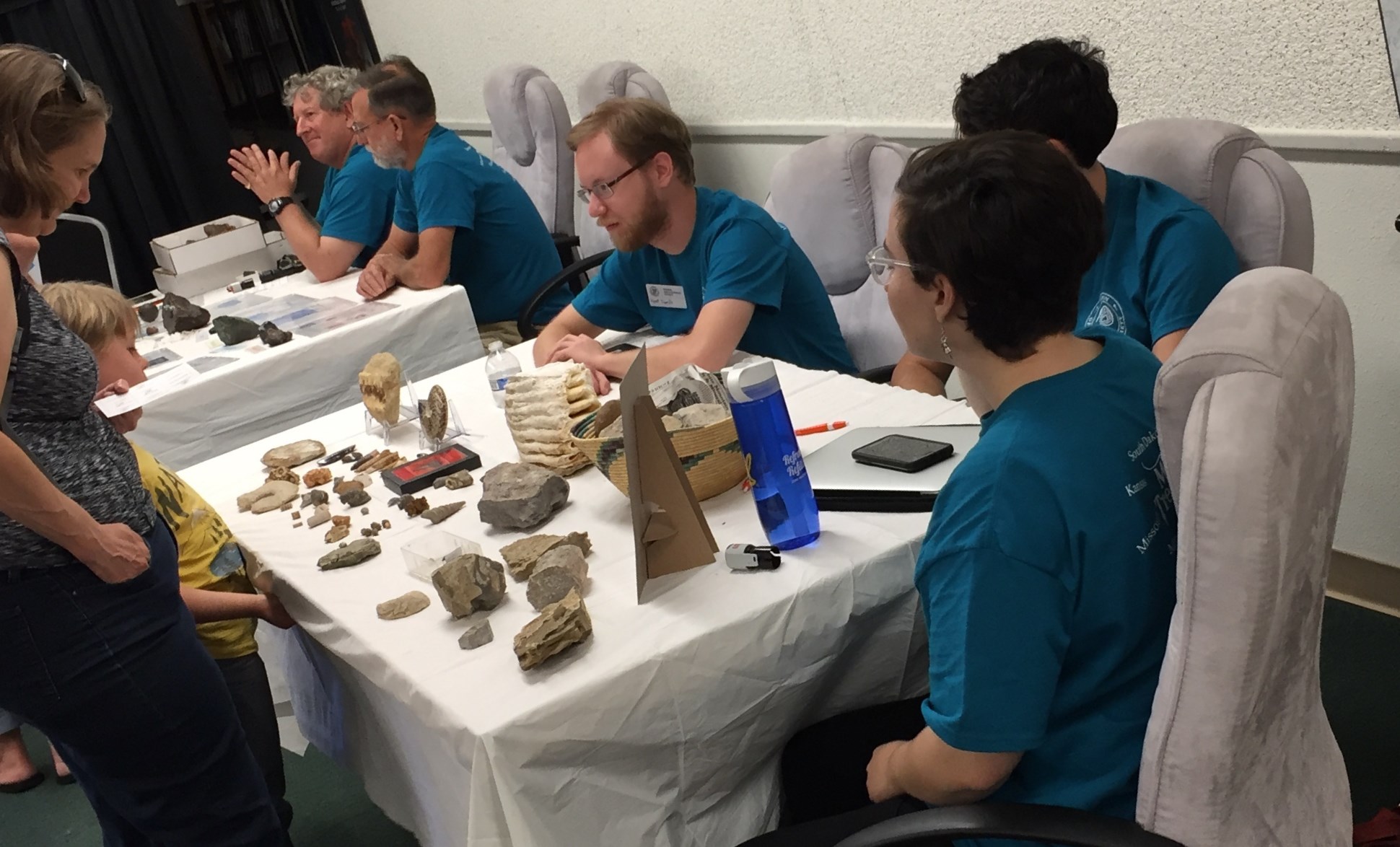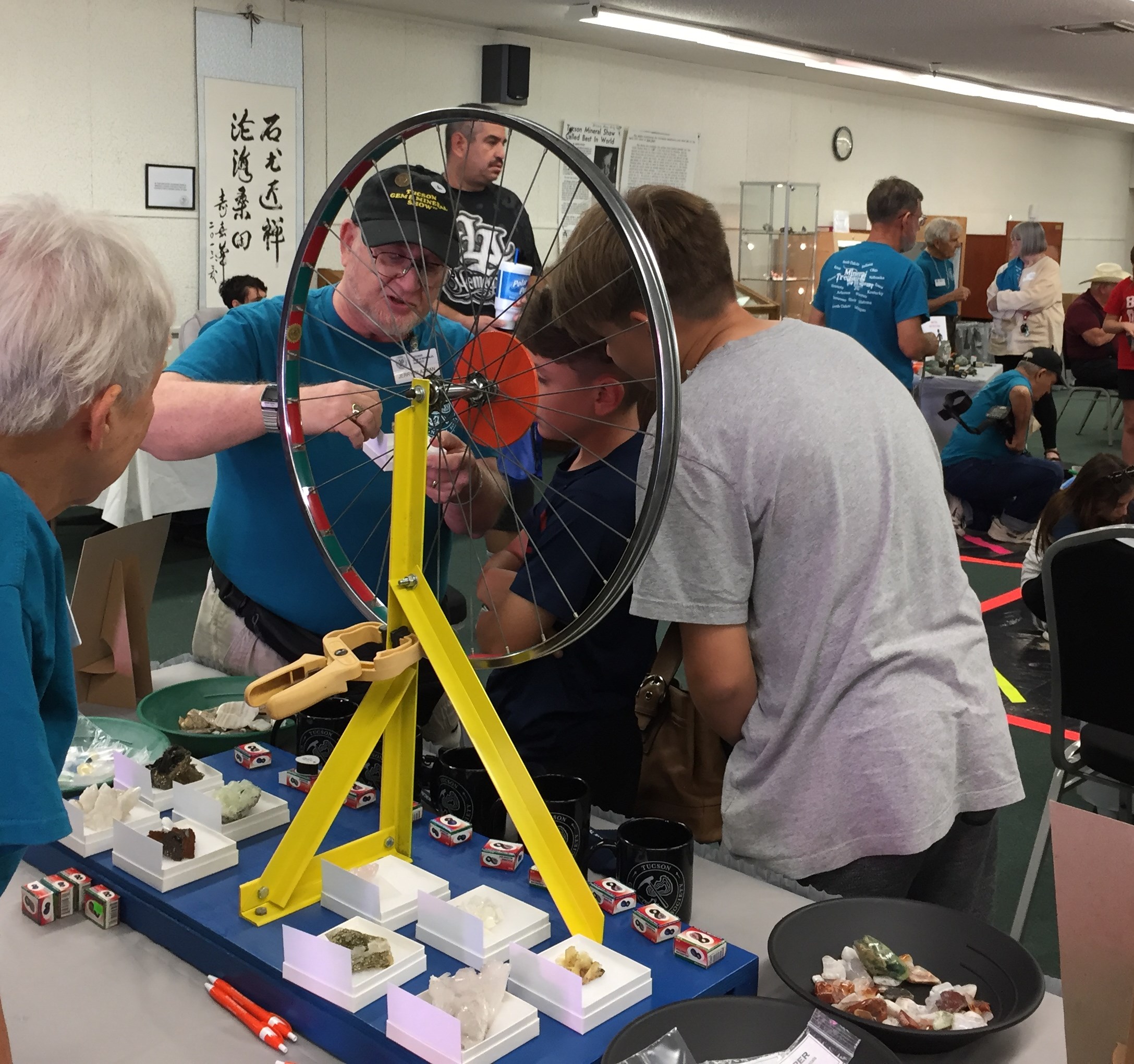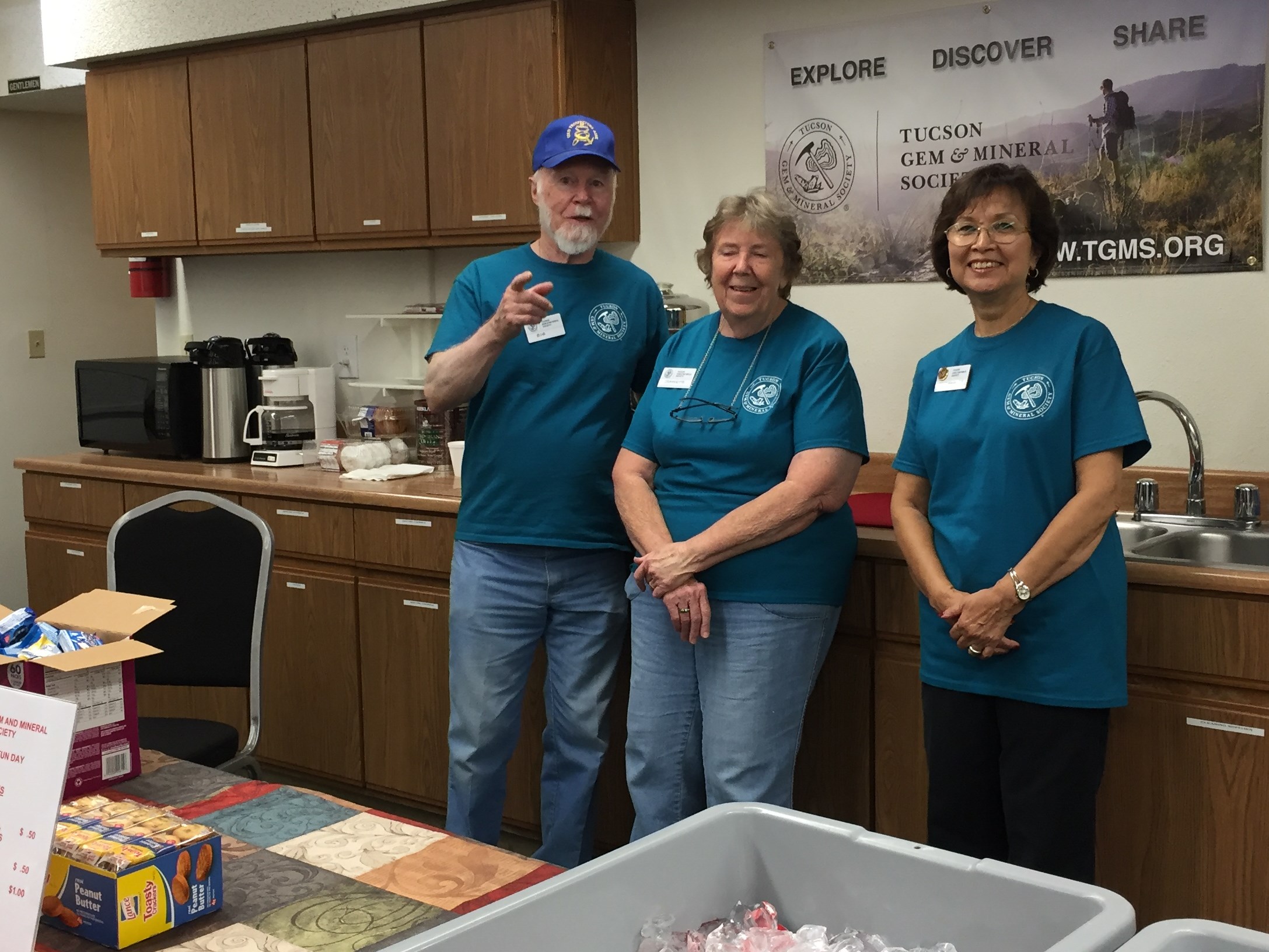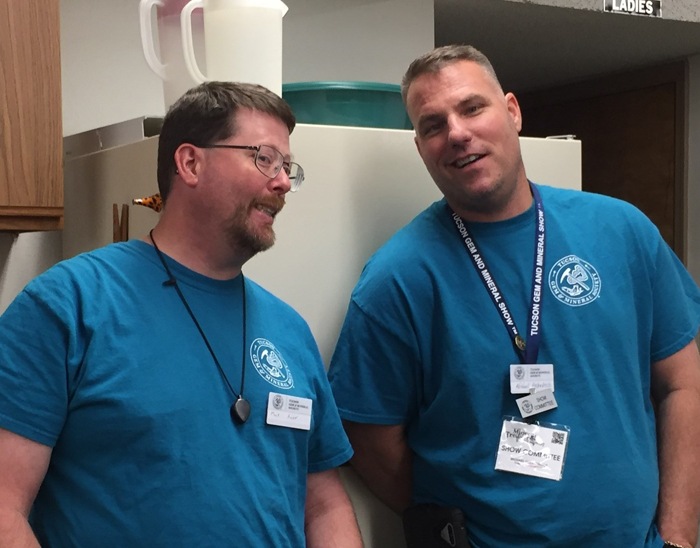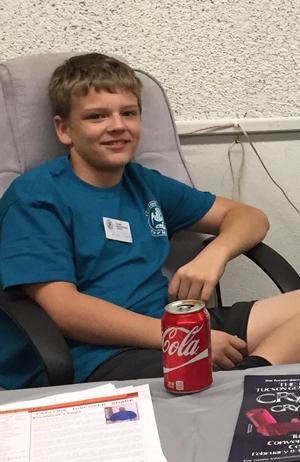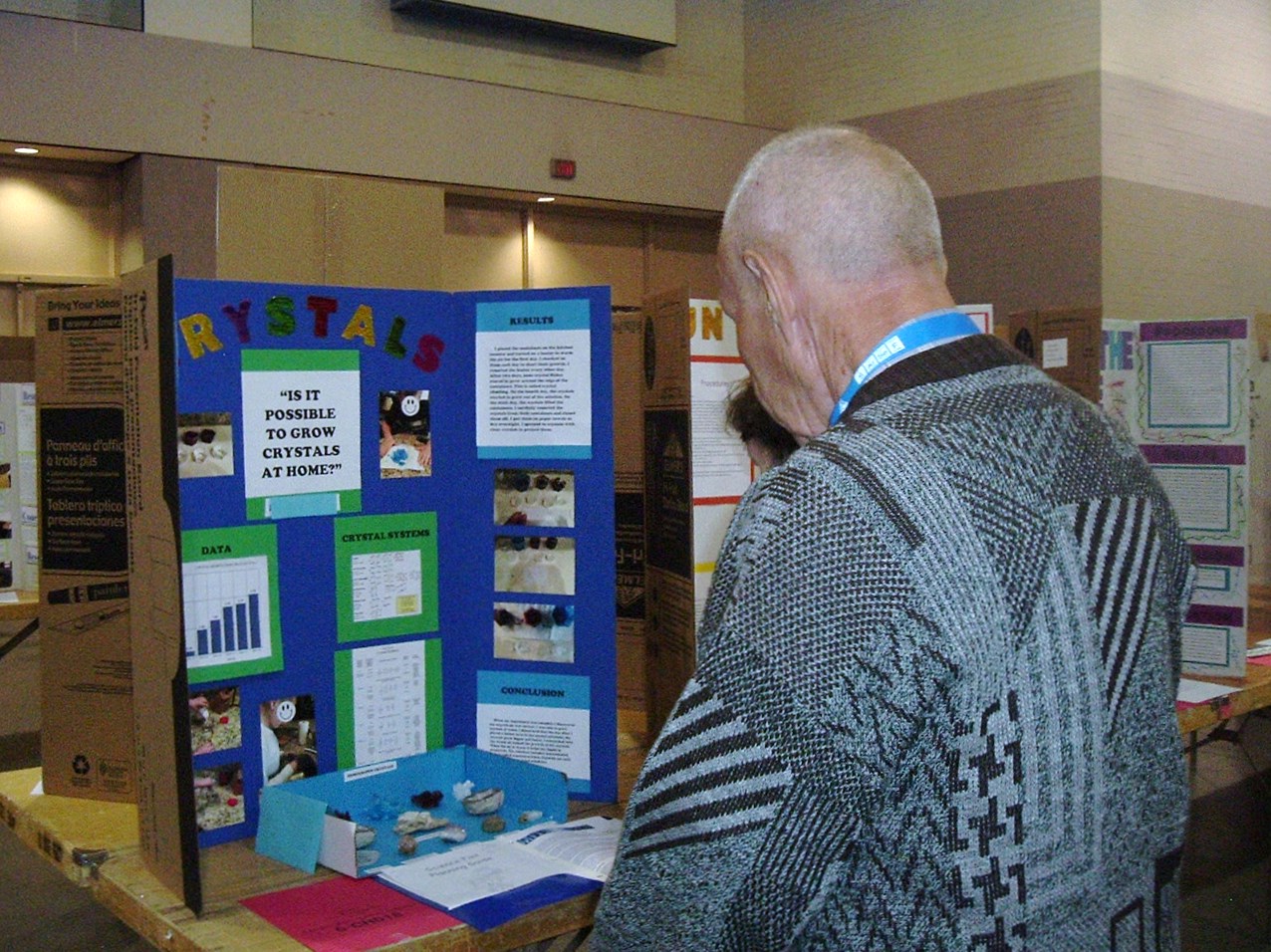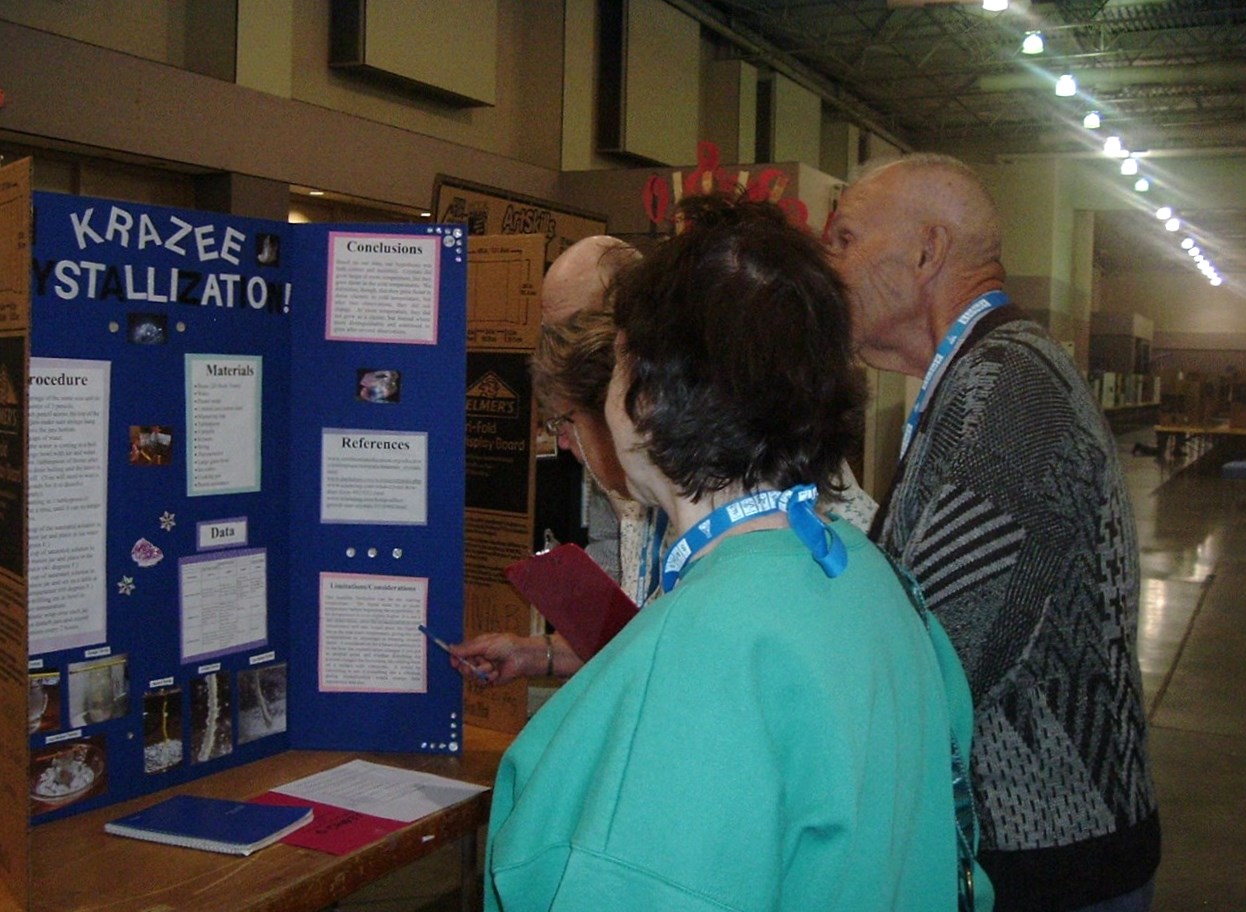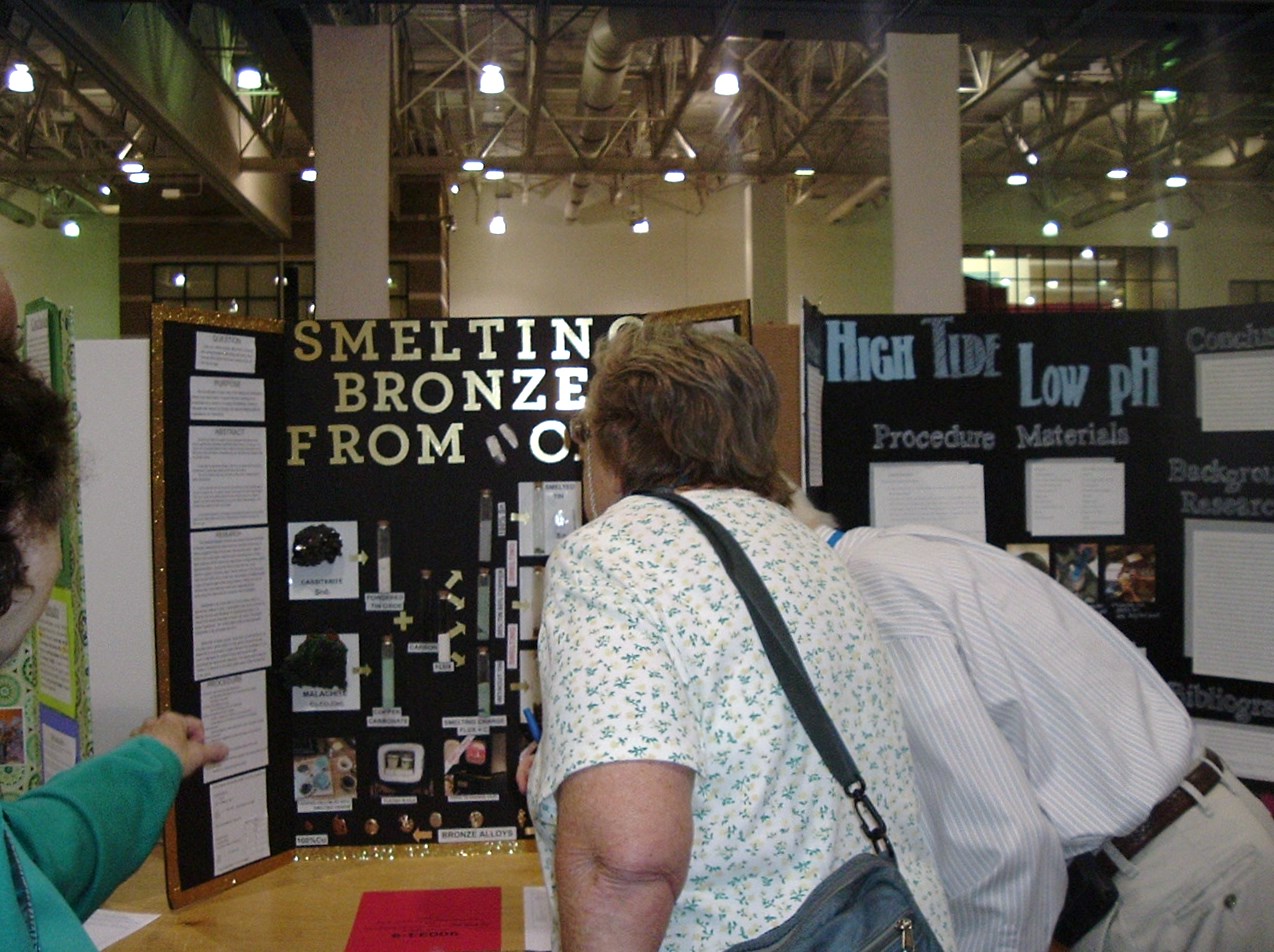The Tucson Gem and Mineral Society is always willing to go out into the community and talk about "rocks!" We had two opportunities this summer to do just that ... here are some pictures when we were at the Tucson Children's Museum this summer. Everyone got to look through the microscope, view fluorescent minerals, see how minerals relate to their everyday lives and even take mineral specimens home with them. We had a GREAT time!
"Libraries Rock!"
TGMS has been involved with several community outreach programs. We had the privilege recently to be involved with another one at the Murphy-Wilmot Library.
On Saturday, June 2, 2018, five TGMS members spent a couple of hours at the library for their "Libraries Rock!" day and boy did we have a good time!
We set up five stations that parents and children could visit and have a hands-on experience.
The first station was "How Minerals Affect Your Life." They were shown calcite, talc, quartz, copper (to name a few) and how they are used in products in our daily lives. Plus, they got to see what the actual minerals looked like and hold them in their hands.
Then we had the micro mineral station. Everyone had the opportunity to view four micromounts (dioptase, vanadanite, gold and kammererite) through the scope ... lots of kids enjoyed that! They loved the colors and couldn't get over how small the minerals were with the naked eye but how big they were through the scope.
Next we had the UV fluorescent display ... our display had the blacklight always on so you can see the fluorescent minerals. Tim McClain added a standard LED light that showed them how the minerals would look normally when it was turned on. That got a really big WOW!
The last two areas were crystal models and "collect your own rocks." We had seven crystals models that could be cut out and put together and then they could collect their own rocks through five boxes filled with goodies. The fun part was the box with the "sharks teeth." Everyone really enjoyed them and the number one question was, "Are these real?"
We had a great day. The library really appreciated what we did (said they want us back again). Within a two-hour period we had over 60 people (parents and kids) visit our displays. Makes you feel good when parents and kids thanked us for being there .... makes all our effort worthwhile.
So to , Victoria Fila, Marilyn Reynolds, Diane Braswell, Tim & Pat McClain ... "Thank You!"
"Kumihimo anyone?"
One of the fun things about being a member of the Tucson Gem and Mineral Society is the ability to participate in our educational classes.
On May 17, 2018 we had our very first "Kumihimo Braiding Class!" Sharlene Baker and Barb Elliott very graciously consented to teach a "beginner's" two-day class.
With the first class, everyone learned the process of Japanese braiding. They learned how to calculate the length of material that would be used for the finished length of their necklaces, how to tie the beginning knot, set up the pattern, attach the weights and, last but not least, how to take it off the disk, tie it off and attach the jewelry ends.
They were able to purchase the Kumihimo basic kits. It came with the material to begin their first necklace, instruction sheets, weights, Kumhimo disk, jewelry end caps and, above all, the guidance of two really great and patient instructors.
Both classes were to be only two hours long but, because it was so much fun, each class lasted much longer than that. Everyone made Sharlene and Barb promise that more classes would be taught and on different techniques on braiding and weaving.
Moral to this story, become a member of the Tucson Gem and Mineral Society and join in on the fun!!
The 100 - A Practical Guide to Mineral Collecting in Today's World
"The 100 - A Practical Guide to Mineral Collecting in Today's World"
By Bill Shelton
A Special Publication of the New York Mineralogical Club, Inc.
“Based on Bill’s many years of mineralogical experience, “The 100” was a list that included the most important, and likely the most common minerals, in all of our mineral collections.”
“…..it has been one of the most popular series of articles published during the period I have been the NYMC’s Bulletin Editor.”
“…….we decided to “preserve and protect” this series of articles in this Special Publication of the New York Mineralogical Club.”
“……the alphabetical listing appearing later in the book makes it easy to quickly find information about a given mineral……”
Mitchell Portnoy
Editor, Bulletin of the New York Mineralogical Club
TGMS has 100 copies of this special publication for sale. For its content and information, it is very modestly priced; it is being sold for $15.00. Proceeds from the sales will benefit the TGMS Library Fund. You can contact the TGMS Office at 520-322-5773 or tgms@tgms.org for more information.
How Good Is Your Imagination? Part 2
HOW GOOD IS YOUR IMAGINATION? - Part 2
This is your final look how crystals are put together before the 2018 Show – Crystals & Crystal Forms. So, what have we learned thus far? We know there are six basic crystal systems – isometric, hexagonal, tetragonal, orthorhombic, monoclinic and triclinic. And we know that these designations are based on how the atoms in minerals fit together. The elemental atoms are arranged in a series of seed crystals whose interiors have imaginary lines, or axes, of different lengths. And that these axes meet at various angles in the center of the mineral’s seed. Like atoms attach to this seed and result in the macro crystals we see with our eyes. We’ve addressed the first three – isometric, hexagonal, tetragonal. Now let’s look at the remaining three – orthorhombic, monoclinic, triclinic.
Orthorhombic diagram
Let’s go to your imagination and visualize the orthorhombic crystal system. There are three axes that intersect at right angles, 90 degrees, in the center of the seed. The isometric and hexagonal systems we looked at earlier have a similar axis arrangement with axes of equal length. The difference here is that each axis is a different length. What might a mineral in the orthorhombic crystal system look like? You may see combinations of distorted octahedrons, pyramids and prisms. Some minerals that crystallize in this system include barite, sulfur and topaz. There are two models for you to cut out and assemble – an (click on) orthorhombic block and a (click on) basal orthorhomb.
Monoclinic diagram
The monoclinic crystal is next to consider. We still have three axes of different lengths compared to one another. Two of them cross at right, 90 degree, angles, while the third is perpendicular and at a 120 degree angle. Crystal shapes may resemble prismatic blocks like orthoclase feldspar or swords like gypsum. Other minerals that crystalize in the orthorhombic system include azurite, epidote and papagoite. To add to your crystal model collection we’ve provided a (click on) basal monoclinic model and an (click on) octapyramid.
Triclinic diagram
Lastly, there’s the triclinic crystal system. This one will really give your imagination a workout. There are only three axes, but they are all different lengths in relation to one another and they intersect at different and odd angles. There are only two subdivisions in this system, unlike the others with multiple subdivisions and classes. Basic shapes are prisms and pyramids but they are highly distorted. We’ve given you two models to assemble – an (click on) octahedron and a (click on) basal pyramid. Albite and microcline feldspars crystallize in the triclinic crystal system, as well as chalcanthite, manganbabbingtonite and turquoise.
How Good Is Your Imagination?
How Good Is Your Imagination? - Part 1
By Anna Domitrovic
We’ll be taking a look at the six crystal systems in this article (Part 1) and the next article (Part 2). But, unless you’re a crystallographer, you’ll need a good imagination to make sense of how crystals are put together and the way they look to the observer. The focus for this installment will be the isometric or cubic, the hexagonal and the tetragonal crystal systems. There is an order to the way the atoms of an element or compound congregate to form a geometric shape. Since that arrangement starts at the atomic level, you’ll need to close your eyes and visualize that arrangement. But keep in mind as well, that the crystal forms we’ll talk about are not as perfect as the models we’ve given you. Mother Nature has a habit of putting her own spin on crystallography.
Let’s start with a relatively simple and common crystal in the isometric crystal system. Crystal forms are cubes (pyrite, halite), octahedrons (fluorite) and dodecahedrons (garnet), but there are many, many forms and subclasses. Ever hear of a dyakisdodecahedron. Well, it exists in the isometric crystal system. Let’s go back to the ones mentioned previously. Picture a perfect cube. There are three imaginary lines called axes that intersect in the middle of the cube. Each axis is of equal length and at a 90 degree angle to one another. That is true for every form in the isometric crystal system. Some other minerals that are in this system include copper, gold and silver. How many more can you think of? The models I’ve included to represent this crystal system are (click on) the cube and (click on) the octahedron.
The hexagonal crystal system is the next one to take a look at. A form you may be familiar with includes prisms or barrel-shaped crystals (beryl, mimetite, vanadinite). Scalenes and rhombs (dogtooth calcite, rhodochrosite) are also forms common to this crystal system. Some crystallographers would like to take minerals like calcite and rhodochrosite out of the hexagonal system and put it in another similar one called trigonal, but for our purposes, we’ll call them all hexagonal. Imagine four axes for this crystal system. Three of them are equal in length at 120 degree angles from one another. There’s a fourth one, perpendicular to the other three and different in length. Some other minerals that crystallize in this system include bobdownsite, corundum, fluorapatite and pyromorphite. Once again, how many more can you add to the list? You have a model for (click on) the hexagonal dipyramid and (click on) the rhombohedron.
Now let’s look at the tetragonal crystal system. We’re back to three axes. Two of them are equal in length and at right angles to one another. The third is perpendicular to the other two, but can be either shorter or longer. Crystals may look similar to those in the isometric system, but they are either stretched or compressed along that third axis. Arizona’s state mineral, wulfenite, fits into this crystal system. Others include chalcopyrite, matlockite and scheelite. And the crystal models you have to work with are (click on) the tetragonal dipyramid and (click on) the tetragonal prism.
Well, I’ve really given your imagination a workout. I hope that the diagrams and images help you to understand what crystallographers are up against. As I said before, many of these crystal forms are not the ideal geometric shape. But practicing with actual mineral crystals is a good exercise in taking your imagination to reality. Give it a try! And stay tuned for Part 2.
TGMS Family Fun Day!!
TGMS Family Fun Day - Saturday, September 30, 2017
By Pat McClain
At a TGMS Board meeting recently, the subject came up about community outreach programs. After tossing around several ideas, I came up with the suggestion of having a "Family Fun Day!" This would give us the opportunity to showcase to the Tucson community what the Tucson Gem and Mineral Society is all about, utilize all the wonderful talent that we have in our membership and maybe, just maybe we could actually get families to come to our facility and learn something about the earth sciences, all while having fun. I said to the Board that we could pull this off but only with their help ... well they really did!
After we had some TGMS members on board for the project, we had two or three meetings where we pulled all of our ideas together and we came up with a game plan. We decided to have a cave crawl, rock identification, mineral identification, microminerals and micromounts, mineral uses, rock dig, metal detecting, meteorites & meteor-wrongs, fossils & evolution, fluorescent minerals, gold panning and a rock crusher.
Everyone who volunteered to work on this project really came through in flying colors; they worked really hard on the areas that they had signed up to man. Ron Gibbs really deserves a special "thank you" because he is the one that brought our idea of "spin the wheel and win a prize" to fruition. He found a bike wheel, made the stand, painted all of the red and green dots and made sure that it was in balance so that everyone would have a fair chance to win a prize.
A BIG "thank you" to Linda Oliver for donating time, talent and material in helping us to put together our fluorescent tent. We had one little boy that was so fascinated with the fluorescent minerals, his mom had a very hard time getting him to go look at anything else. And "thank you" to Kent of Kent's Tools for donating all of the gold pans that we gave away. It made a lot of kids happy! A special "thank you" to Gene & Jackie Schlepp, who donated a wonderful group of mineral specimens. When it came to spinning the wheel and if it landed on a "gold TGMS logo," the kids got to choose from these very special prizes. You should have seen their faces when that happened!
We advertised in as many FREE online event calendars that we could, in hopes that we were getting the word out to everyone. Sometime before the doors opened on that Saturday, there were a few volunteers who were wondering if they were just going to be staring at each other for most of the day. We all let out a hoot when the first parent and child walked through the door right at 10:00 a.m. and the most wonderful thing happened ... they kept coming ... all day long! In a five-hour period we had close to 200 people walk through our doors. And the best part was that most of them were children!
Our volunteers were - Marilyn Reynolds and Victoria Fila manning the door, giving out mineral passport cards and raffle tickets. Mary Kirpes not only made the paper mache cave (with other volunteers), she was directing traffic all day; Ortrud Schuh manning the rock identification; Bill Shelton and Jennifer Isbell doing the mineral identification; Ron Gibbs, Brad Gibbs, Mark Ascher and Tim McClain focused on micro minerals; Mark Marikos explained the mineral uses; Diane Braswell kept the kids busy by helping them dig in the sand for all sorts of fun things; Roy Parson was in the dark all day long, he did the fluorescent mineral display, and helping him was Beverly Lynch who made sure that all the kids had their cards stamped (she was also very adept at directing the folks to our outside stations). Mark Candee handled the meteorite right and meteor-wrong table; Christina Marikos, Kalen Krause and Wyatt Ingalls did a great job with the fossils; Louis Pill and Bob Melzer had fun showing kids what you could do with a metal detector; Kerry Towe was out in the sun all day (even with the tent) explaining the fine art of gold panning; Myles Ingalls got to make some noise with his rock crusher; Jerry and Mary Glazman where in charge of "Spin The Wheel and Win A Prize"; Bob and Jeannette Barnes handled the sale of the snacks; Mike Hollonbeck and Harry Lutzow were our "grand gophers" for the day; Rose Marques and I did our best to make sure that the "details" were taken care of before, during and after.
I think it is safe to say ... "It was a success" ... and I am pretty sure that we will do it again. It truly was a "fun day!"
Comments we received on Facebook:
Lauren Rae Layton Ard - We had a LOT of fun at this event! Heard about it from Arizona Families and we are so glad we came! My Kids are really, REALLY excited about their new rock collections and are even decorating special boxes to keep the rocks in, etc.
Larissa Kaliszewski - We had a great time, you guys put together an enjoyable event! Thank you!
Is It A Crystal Or A Crystal Form?
All Wrapped Up!!
ALL WRAPPED UP!
By Ortrud Schuh
What better way to show off your pretty stones than wearing them proudly around your neck in the form of a beautiful hand crafted pendant. Not everybody can do this, you say? You are not creative enough, you say? You wish you had the time and patience - but you don’t, you say?
But have you ever tried???
Last week five eager TGMS members met for a two day class on how to wire wrap cabochons. Thanks to the knowledgeable instruction of Jo Anne Sam, we all accomplished what initially seemed like a daunting task. Armed with pliers, snips and silver wire, and loaded with polished stones and big ideas, we met at the TGMS facility. We soon found out that three of us had purchased the wrong size wire due to an error made by the supply store personnel. Kim’s skillful negotiation with the very apologetic vendor got us the correct wire and a very nice group discount.
In the course of six hours, Jo Ann patiently talked and walked us through all the steps from cutting the first wire to the finished pendant. We learned never to waste a snippet of silver wire, we are well versed in the use of diagonal clips, needle nose pliers, bent nose pliers, round nose pliers, and flat nose pliers and appreciated the advantage of square and half round, half hard silver wire. Marilyn Reynolds found out the hard way that her beautiful new nails turned out to be a true handicap when working with the silver wire.
We were provided with nourishment and coffee … although Valerian tea would have been more appropriate for some of us (LOL)!
Despite burning eyes and cramped up fingers we all mastered the “tacky” task of bending the tacks, setting the stones and not getting too frustrated when we got our wires crossed. The results are very much worth the trouble as you will probably see at the next TGMS gathering – proudly worn by their makers. I will definitely show off mine!!!
If you also would like to learn the art and craft of wire wrapping, please contact Pat McClain, our TGMS Executive Manager, for the next available course. The class is opened to all TGMS members at no charge. This is a great way to connect to fellow TGMS members and to get involved with our club. In the name of all participants I would like to extend a big “Thank You” to Jo Anne for her time and effort to share her passion with us.
It's Still SARSEF!
IT’S STILL SARSEF - Anna Domitrovic
You may know it as the Southern Arizona Regional Science & Engineering Fair. But some may also know it as SARSEF. The anachronism is the same but a few years ago the name was changed to the Southern Arizona Research, Science & Engineering Foundation to reflect their non-profit status, but it’s still SARSEF. And it’s still the science fair held at the TCC every March.
Now that another science fair judging for the TGMS has come and gone, it’s time to thank the excellent judging team of Jeanette and Bob Barnes and Elaine and Bob Royer with yours truly as team leader. Since judging day was on March 30th, the day before the 3-day event that marked the 25th Minerals of Arizona Symposium, special thanks go to Pat McClain, Executive Manager and Rose Marquez, Executive Assistant for assembling and getting our awards to the TCC for the April 1st ceremonies. Thanks to all involved for keeping the Tucson Gem and Mineral Society front and center at this annual Tucson event.
As for the judging, we had some debate on who should get the first place for our middle school award, but majority ruled and it went to Abbey Brumm, a 6th grader at Tucson Waldorf School. Her project was “Smelting Bronze from Ore and Its Implications”. Bronze is tin (Sn) and copper (Cu). Abbey used cassiterite for the tin ore and a specimen with azurite and malachite for the copper ore, then smelted, refined and produced ingots of bronze. She determined it was a low temperature reaction, around 1,850 degrees Fahrenheit, that resulted in the bronze. Quite a project and deserving of the one award we give to a middle schooler.
The elementary school awards went to two 5th graders and a 4th grader. Leading the charge for the 5th graders was Orion Abrell for “Whether Rocks Weather”. Orion described the project as “an experiment about erosion”. The mass of seven specimens (basalt, conglomerate, dacite, limestone, quartz and quartzite and sandstone) was determined first, and then each was subjected to immersion in carbonated water. After a given time in the solution, mass measurements were again taken. Limestone showed the most noticeable “weathering” of the collection of seven. Theresa Barry teaches Orion at Sam Hughes Elementary.
The second 5th grader to get our attention was Emerson Hoyle, taught by Susan Brindley at Butterfield Elementary. The project, “The Green Penny”, showed how oxidized copper results in green coatings of malachite. Newer pennies (2013, 2014, 2016) were oxidized to extract any copper and compared to the oxidation of older pennies (1972, 1979, 1982) which contain more copper. Attention was also drawn to the Statue of Liberty, showing the green oxidation of the copper contained in this American symbol.
The third of the elementary school awards went to Discovery Plus Academy’s 4th grader, Elisa Verdugo, taught by Diane Thornton. The project, “Copper Electroplating”, asked the burning question “can different metals attract copper?” She attached a battery to a copper sulfate (CuSO4) solution and inserted various objects to determine which ones attracted the most copper, if any. After subjecting objects made of galvanized (nail) and non-galvanized (bolt, screw, washer) steel, sterling silver (fork), stainless steel (fork), aluminum (earring, radiator plate) and cupronickel, a quarter, she determined that the only ones to attract significant copper were the non-galvanized bolt, screw and washer. Elisa expressed an interest in repeating the experiment with a stronger battery. You go girl! There’s your project for next year!
What a fun time it was, and always is, judging at the science fair! The TGMS was the first to contribute and get involved with the science fair when it was first organized more than 60 years ago. We were graciously acknowledged during the opening remarks on judging day. Thank you, SARSEF. We submit our judging team in December every year for the following spring event. Look for an announcement and a call for judges in a fall issue of Rock Talk and contact the office, tgms@tgms.org or me directly at annamd84pa@aol.com if you want to join the fun at the 2018 science fair.

